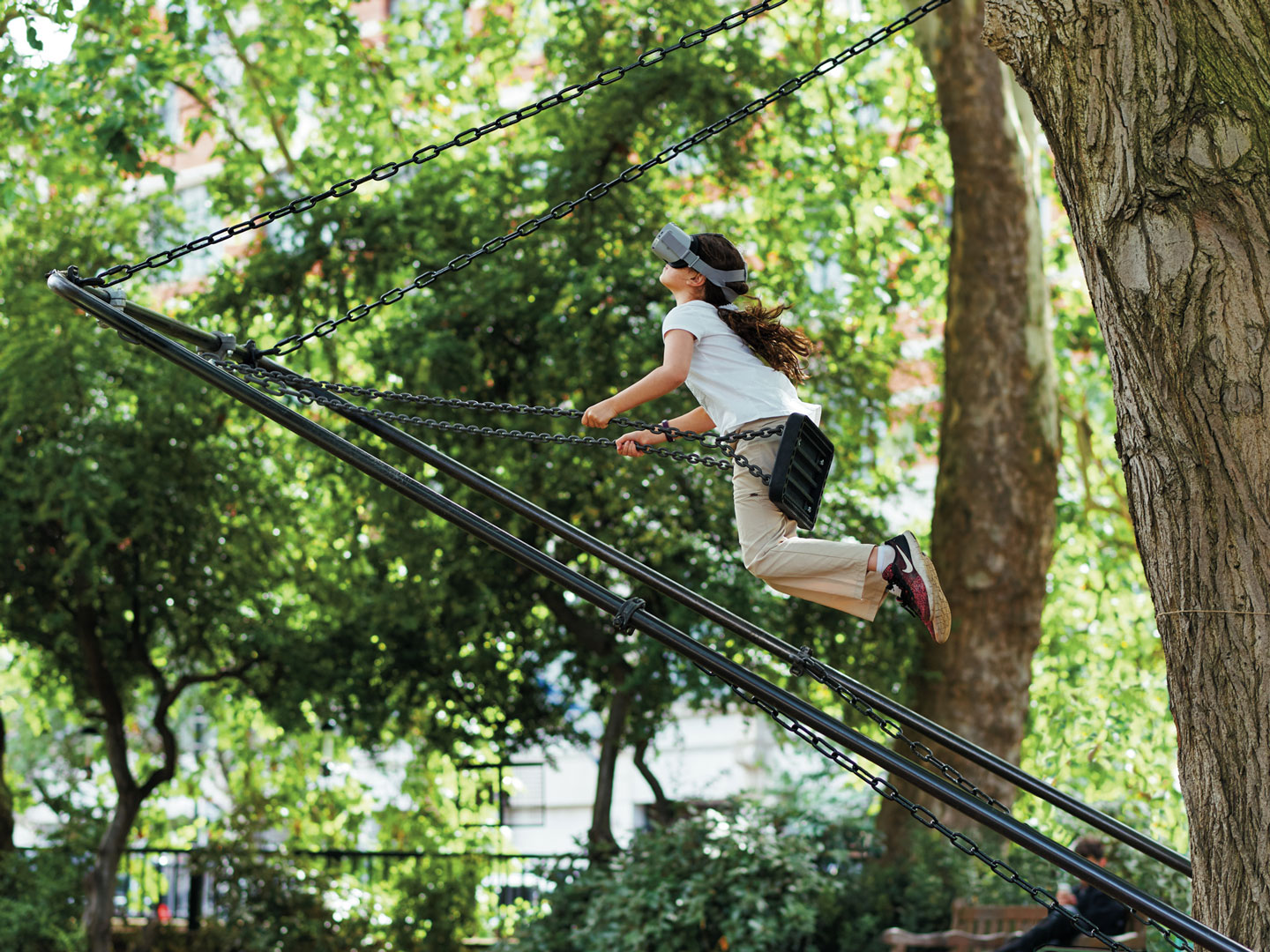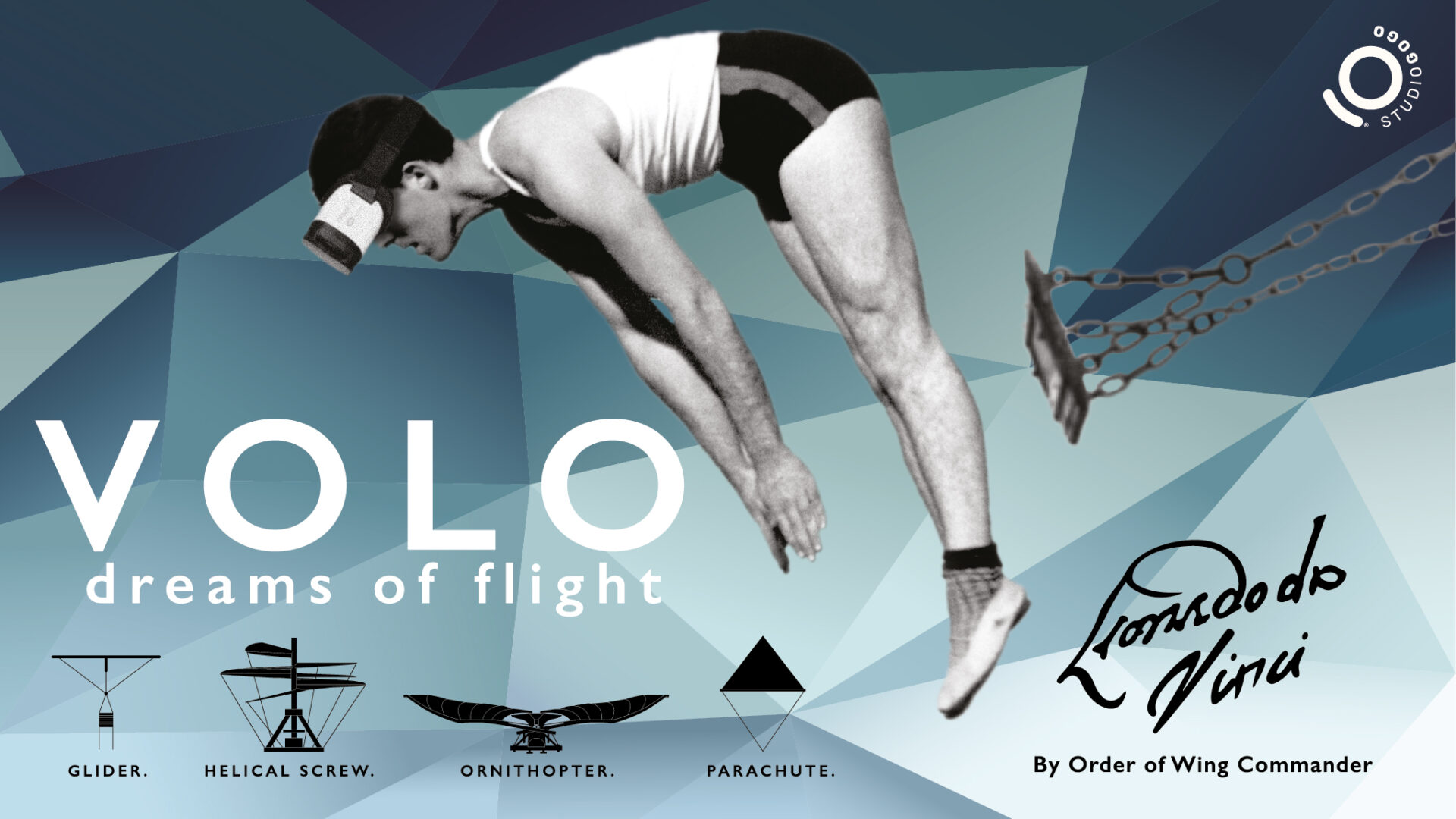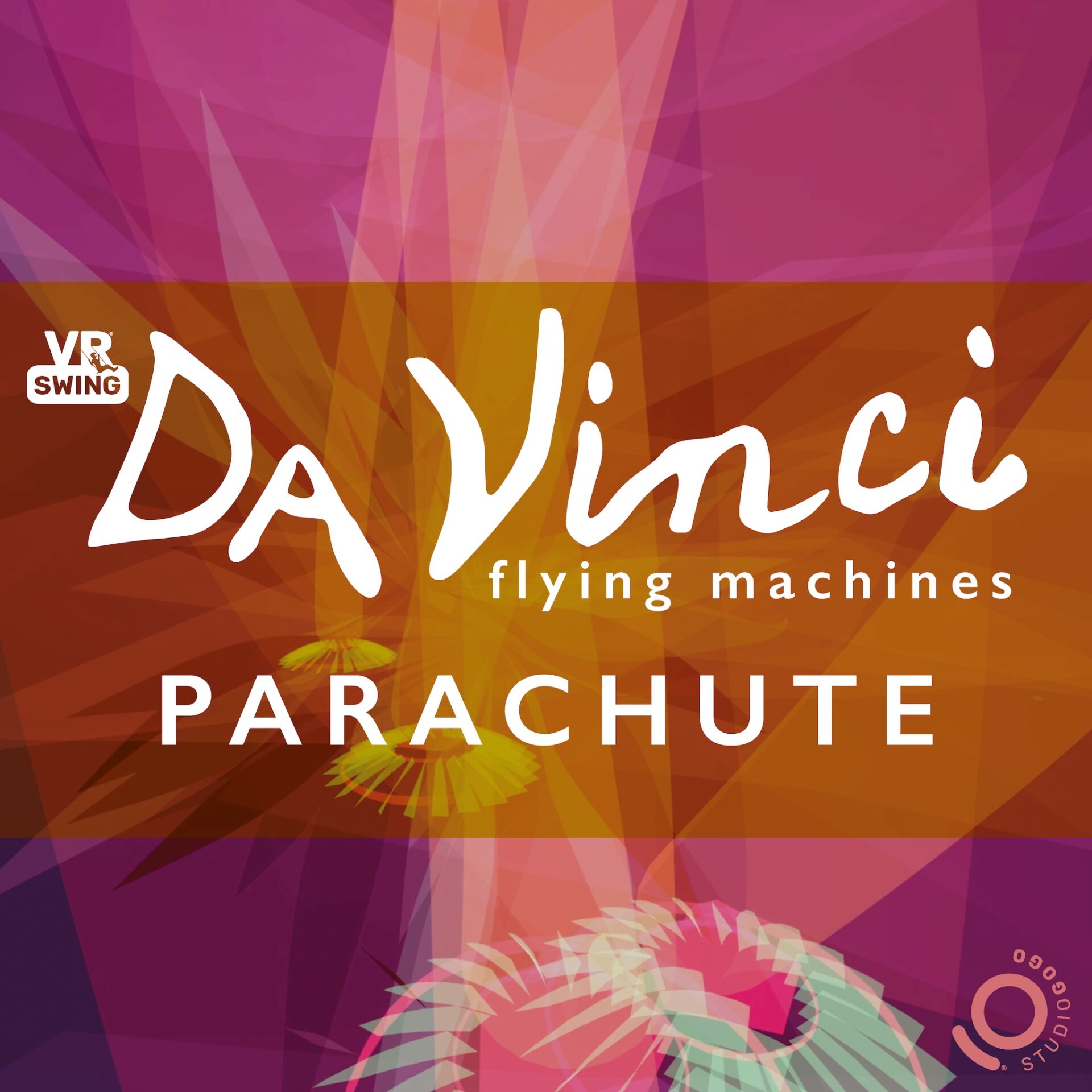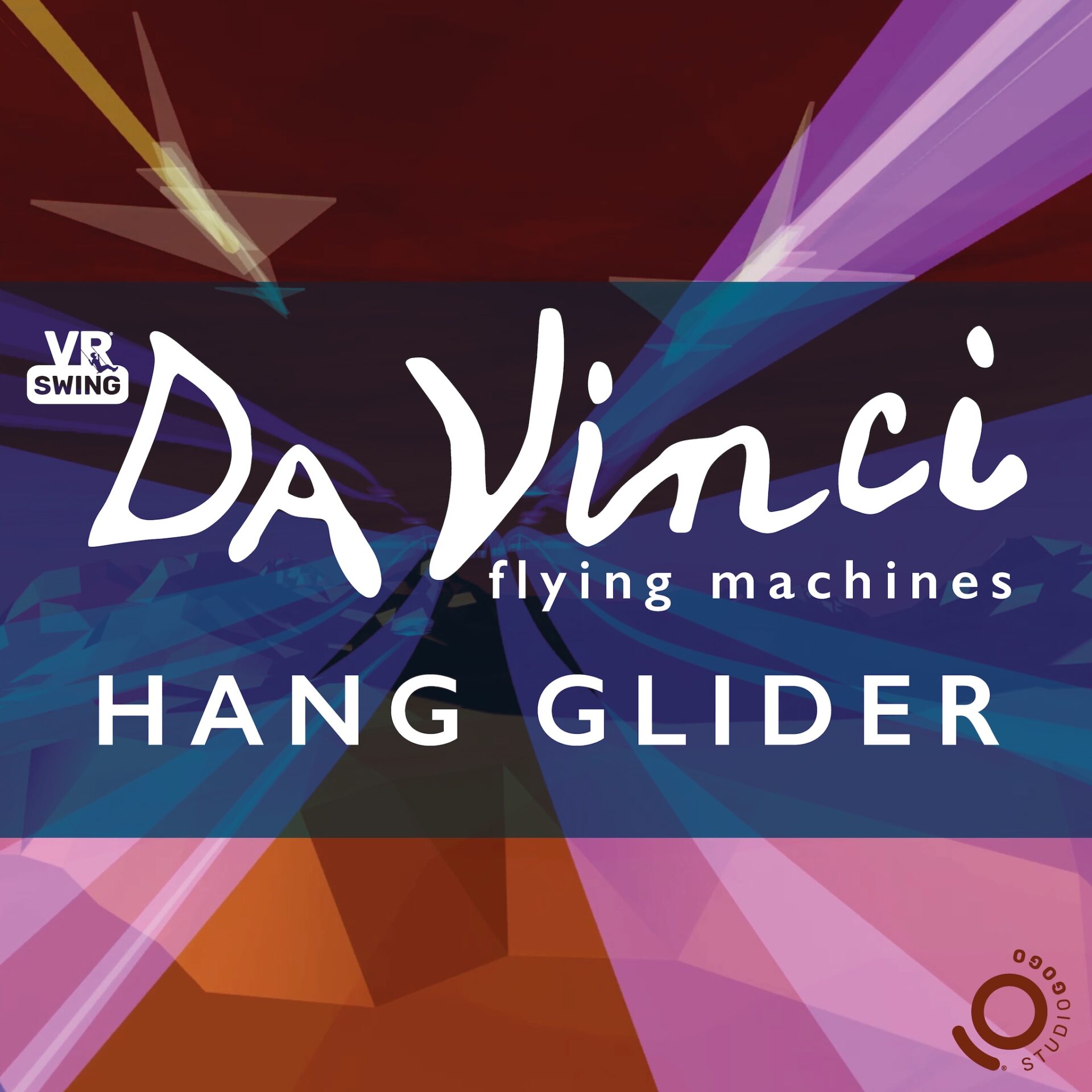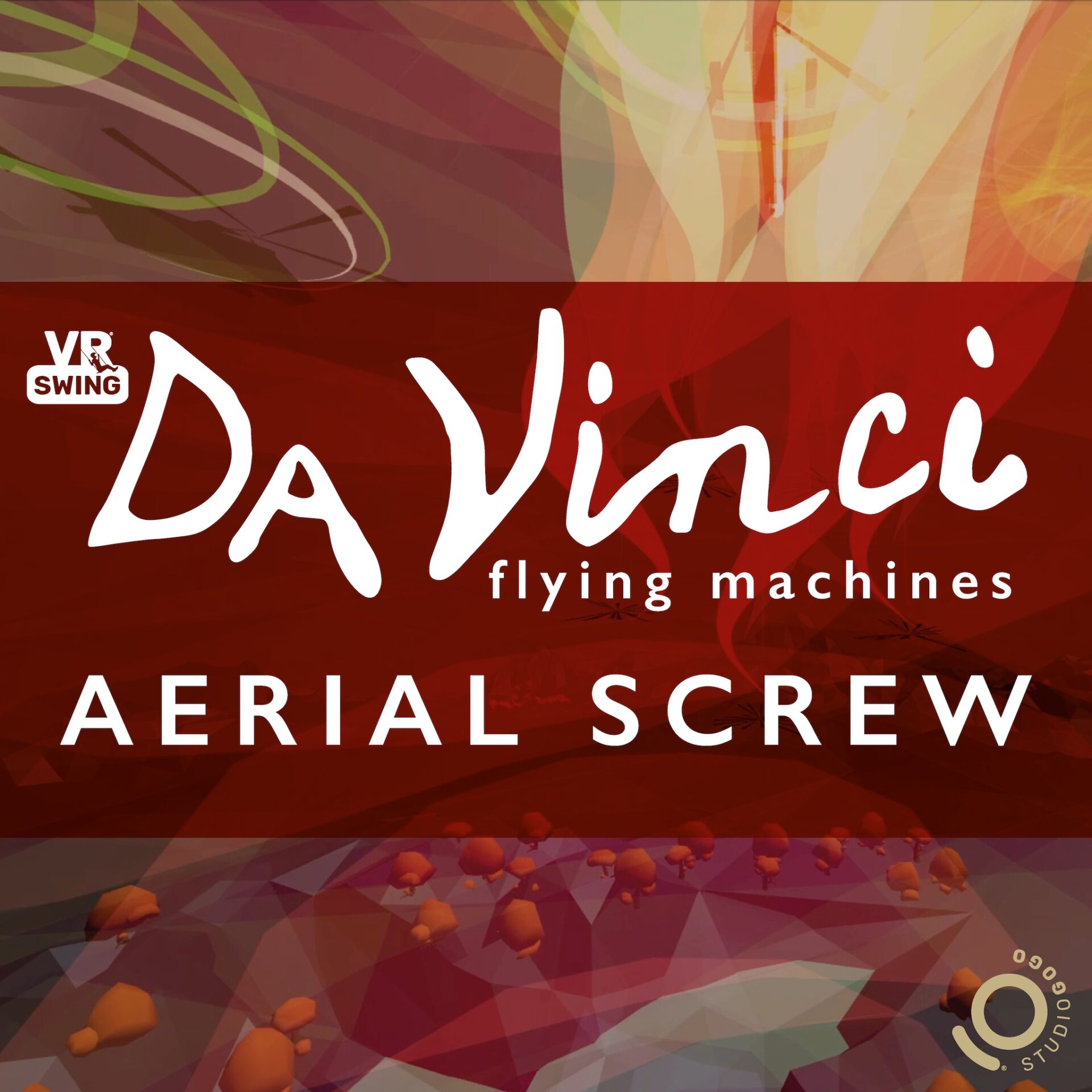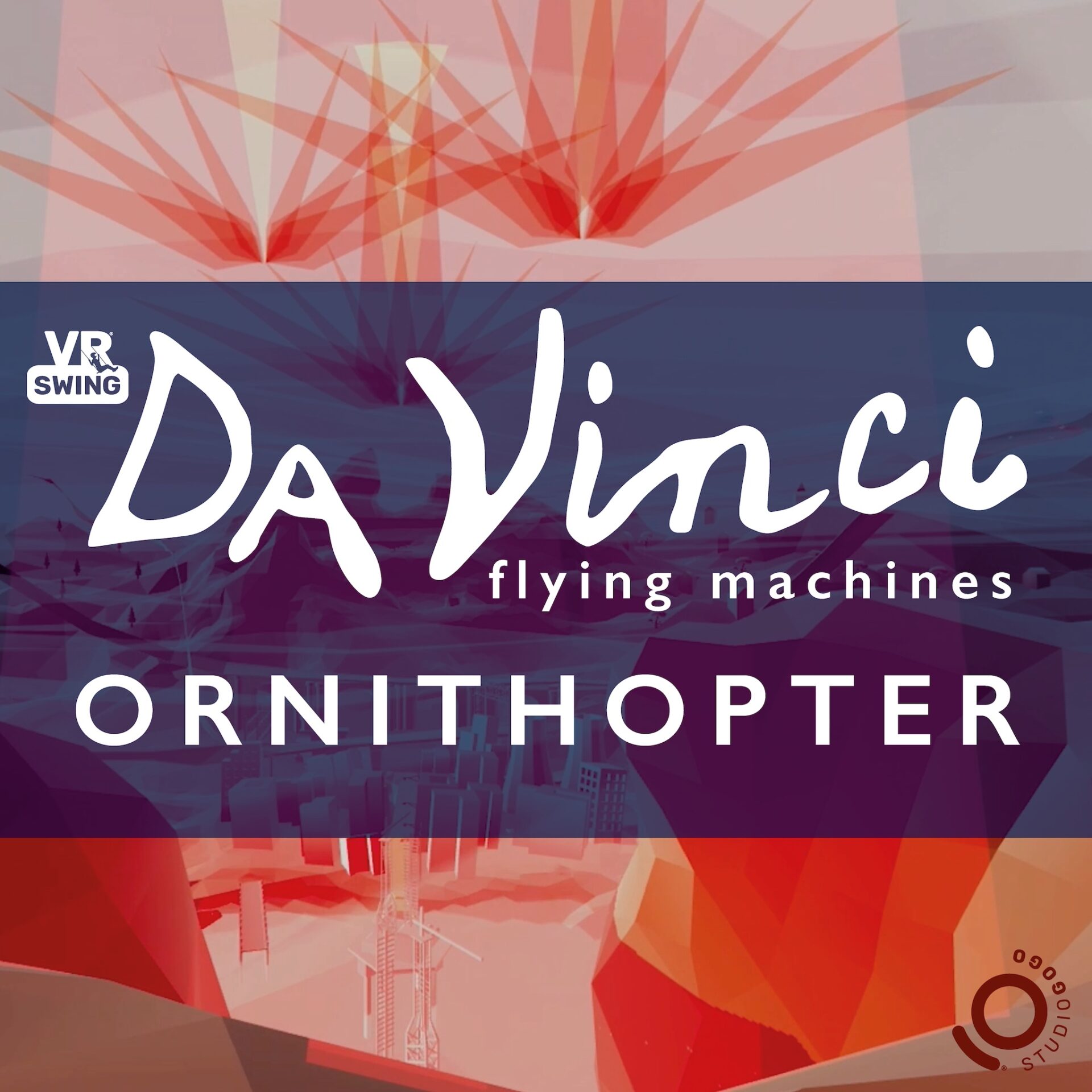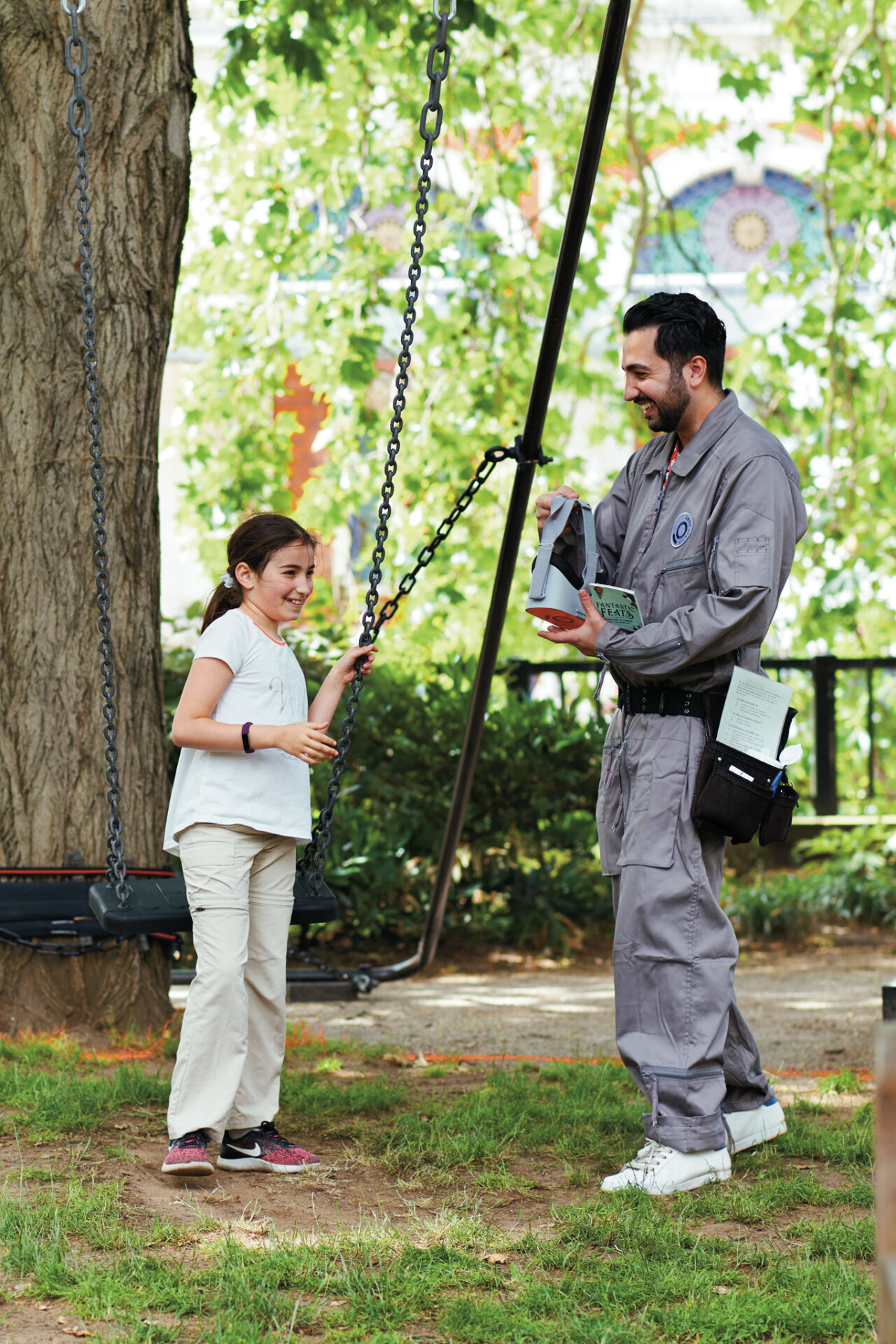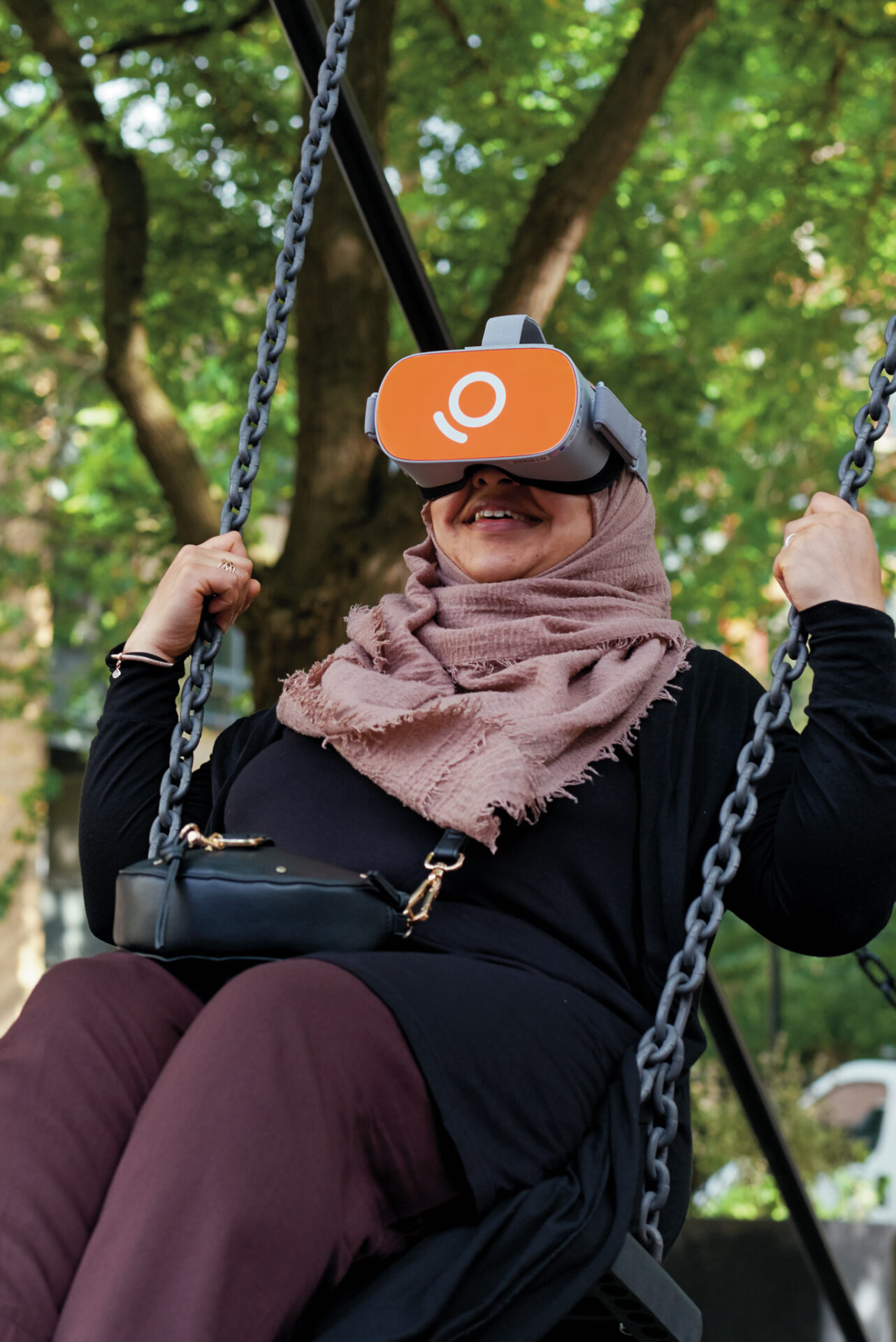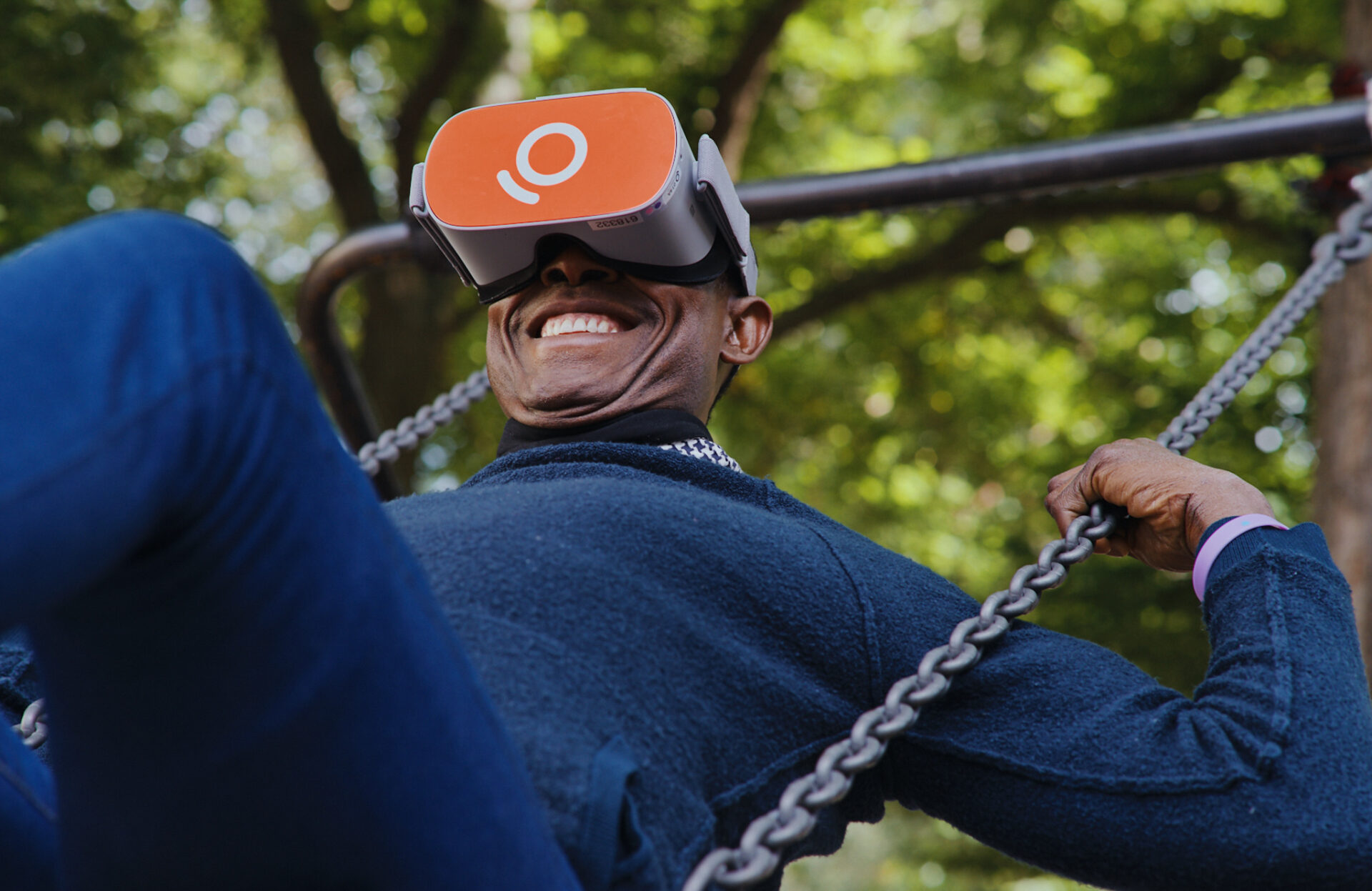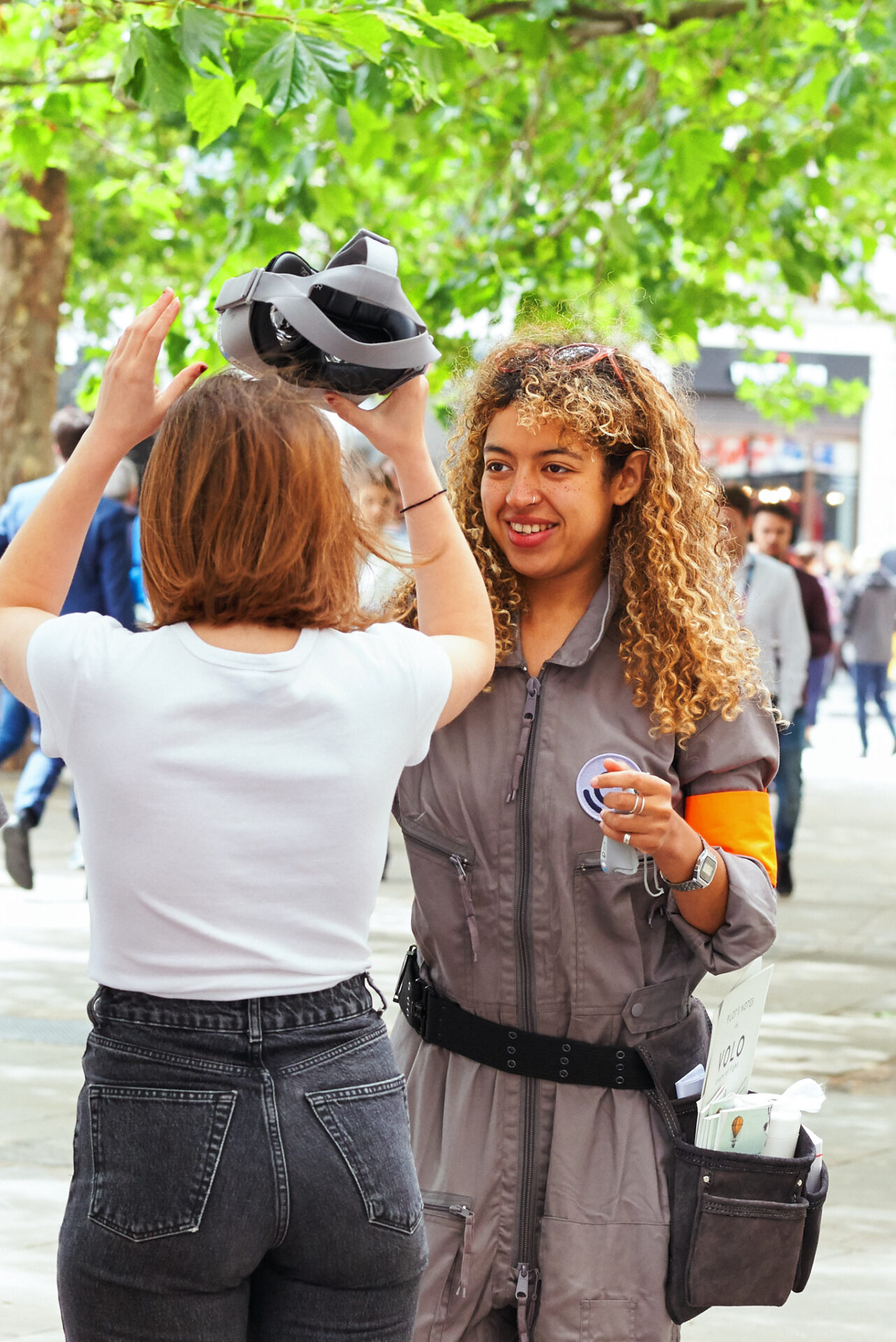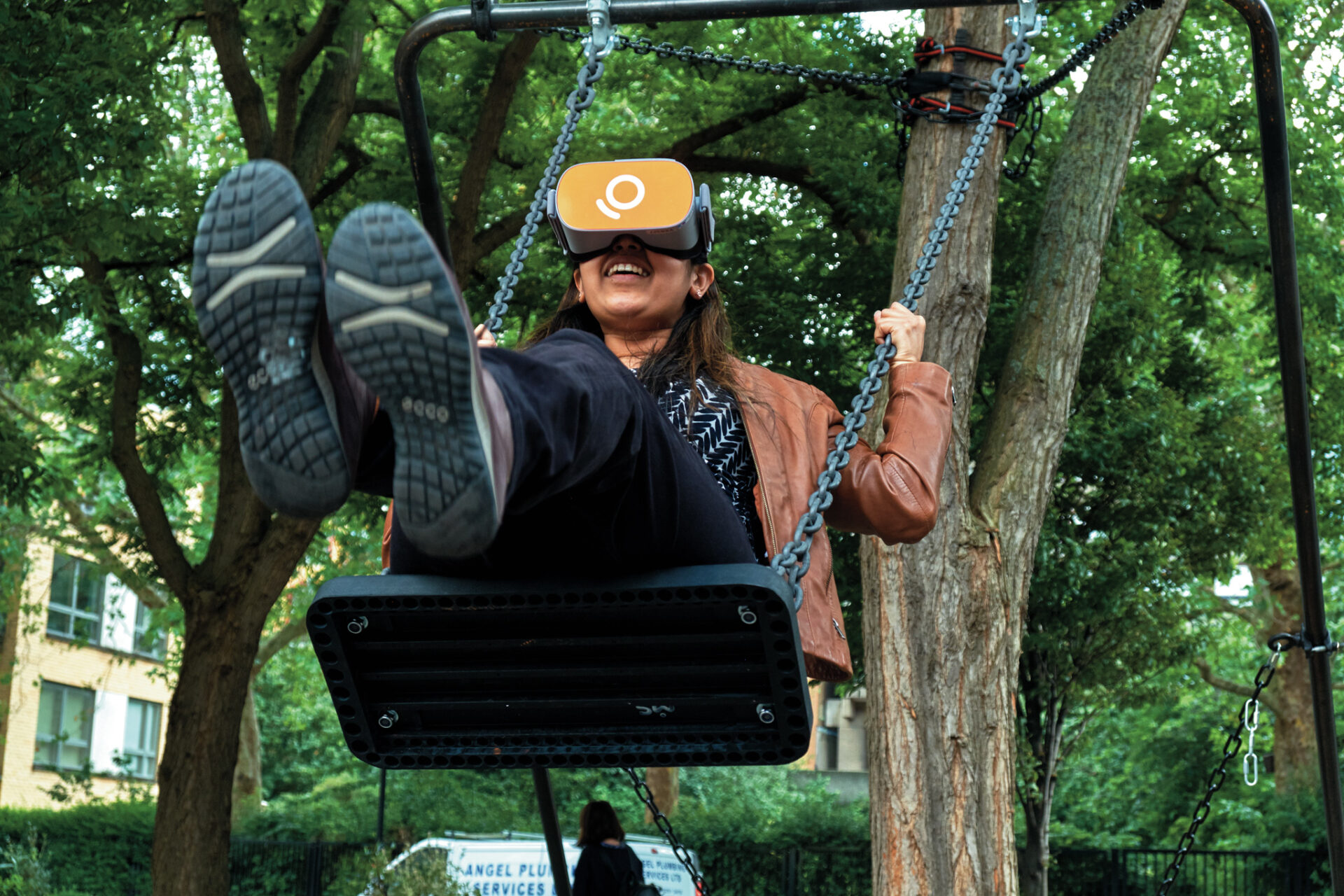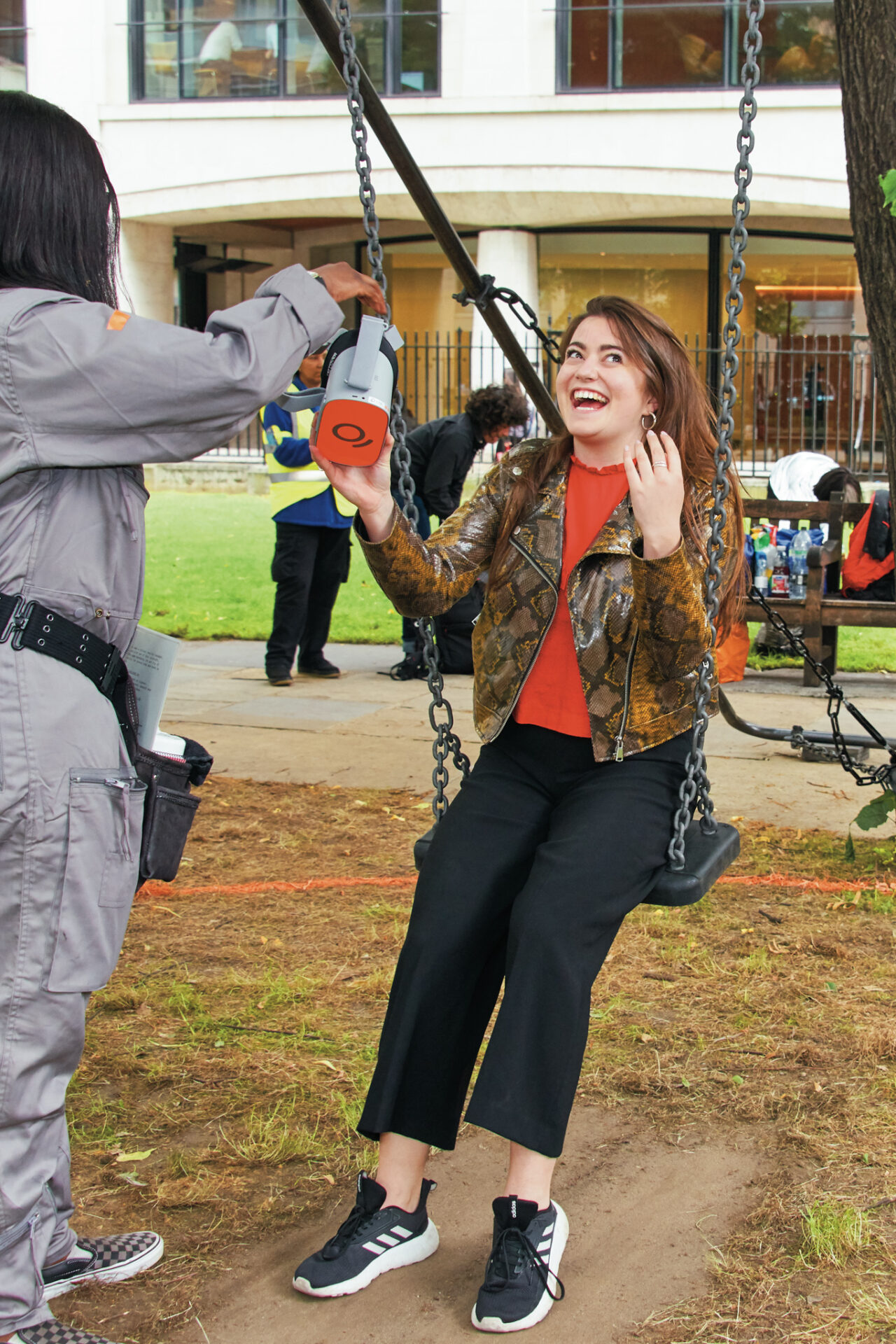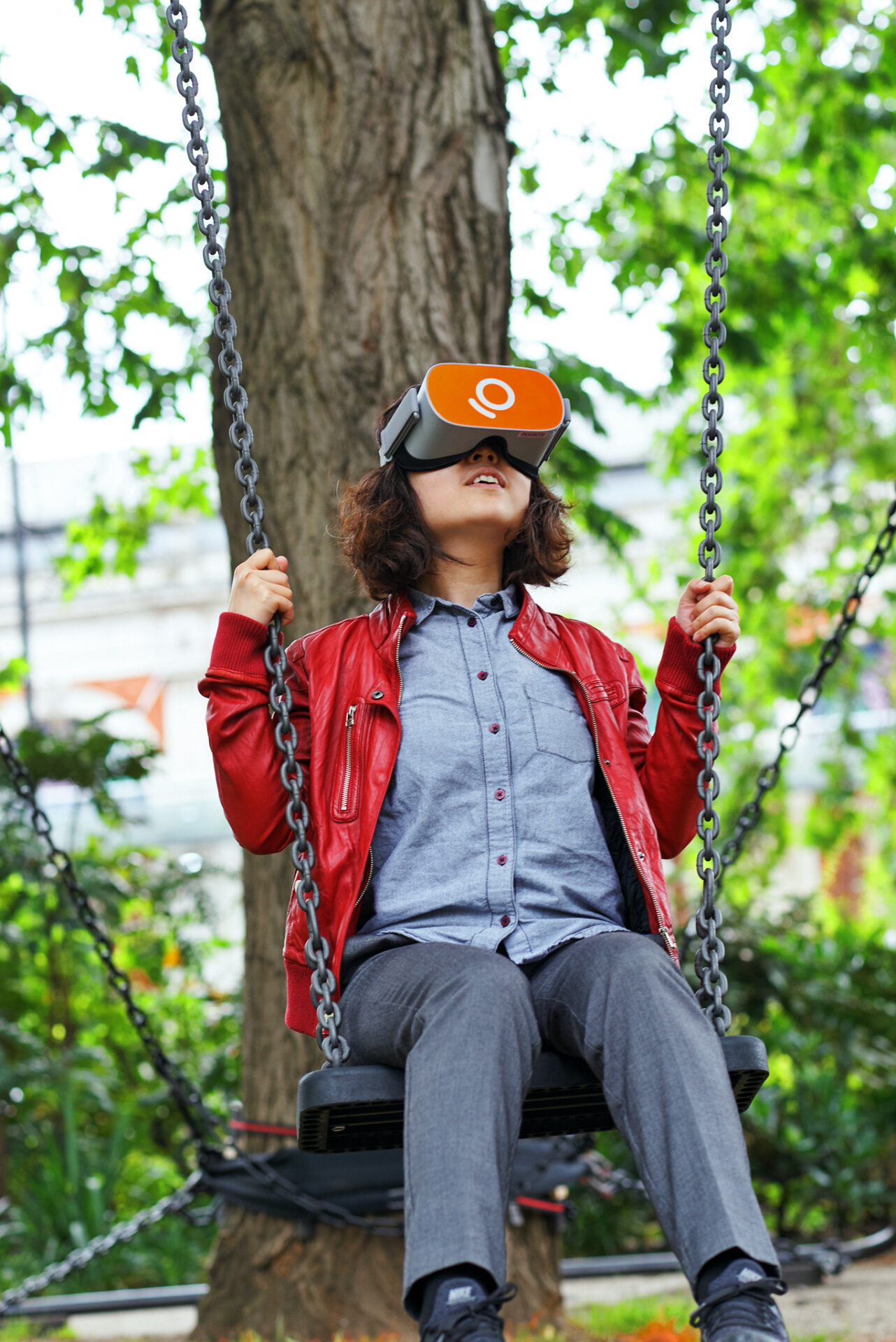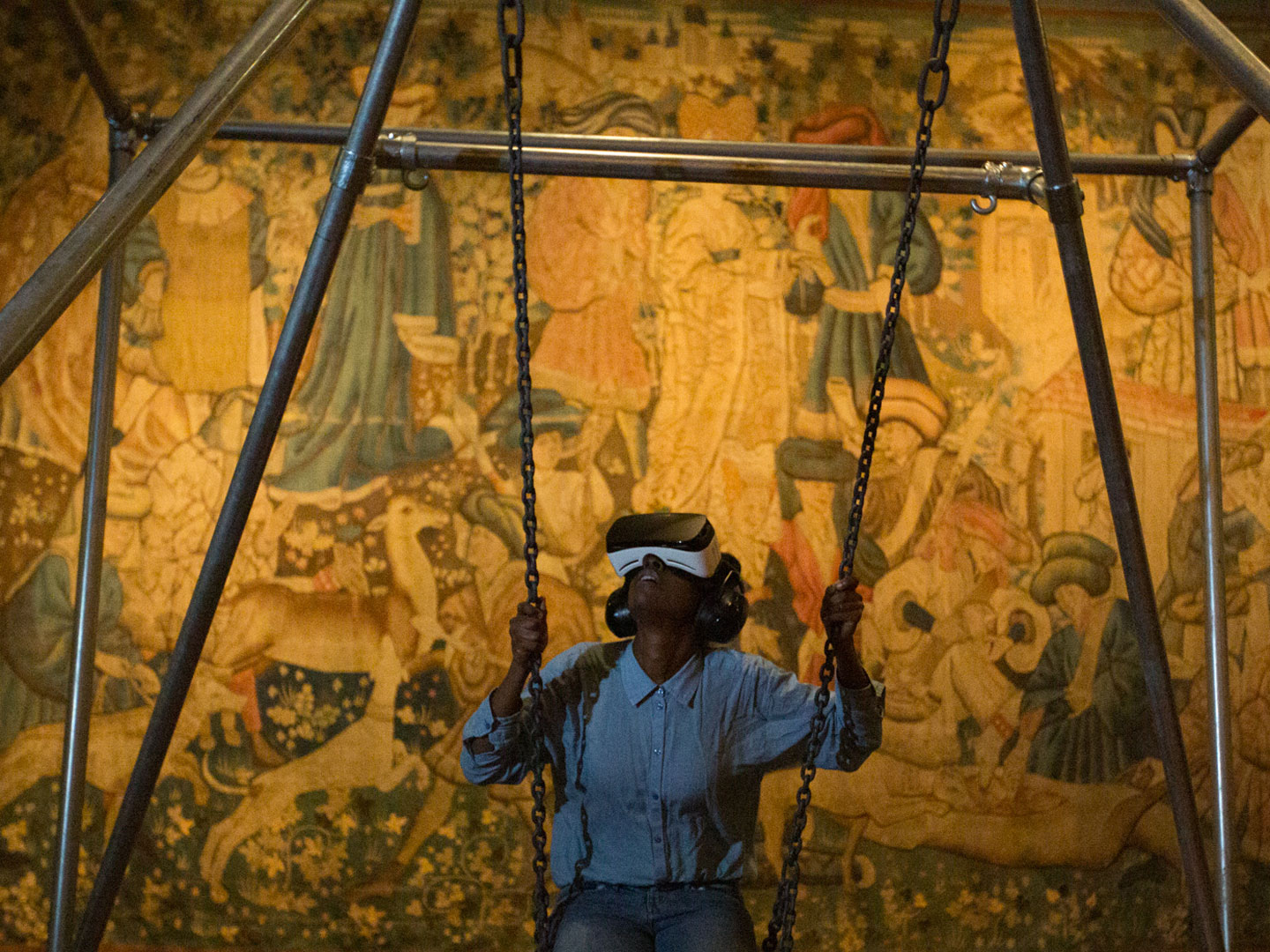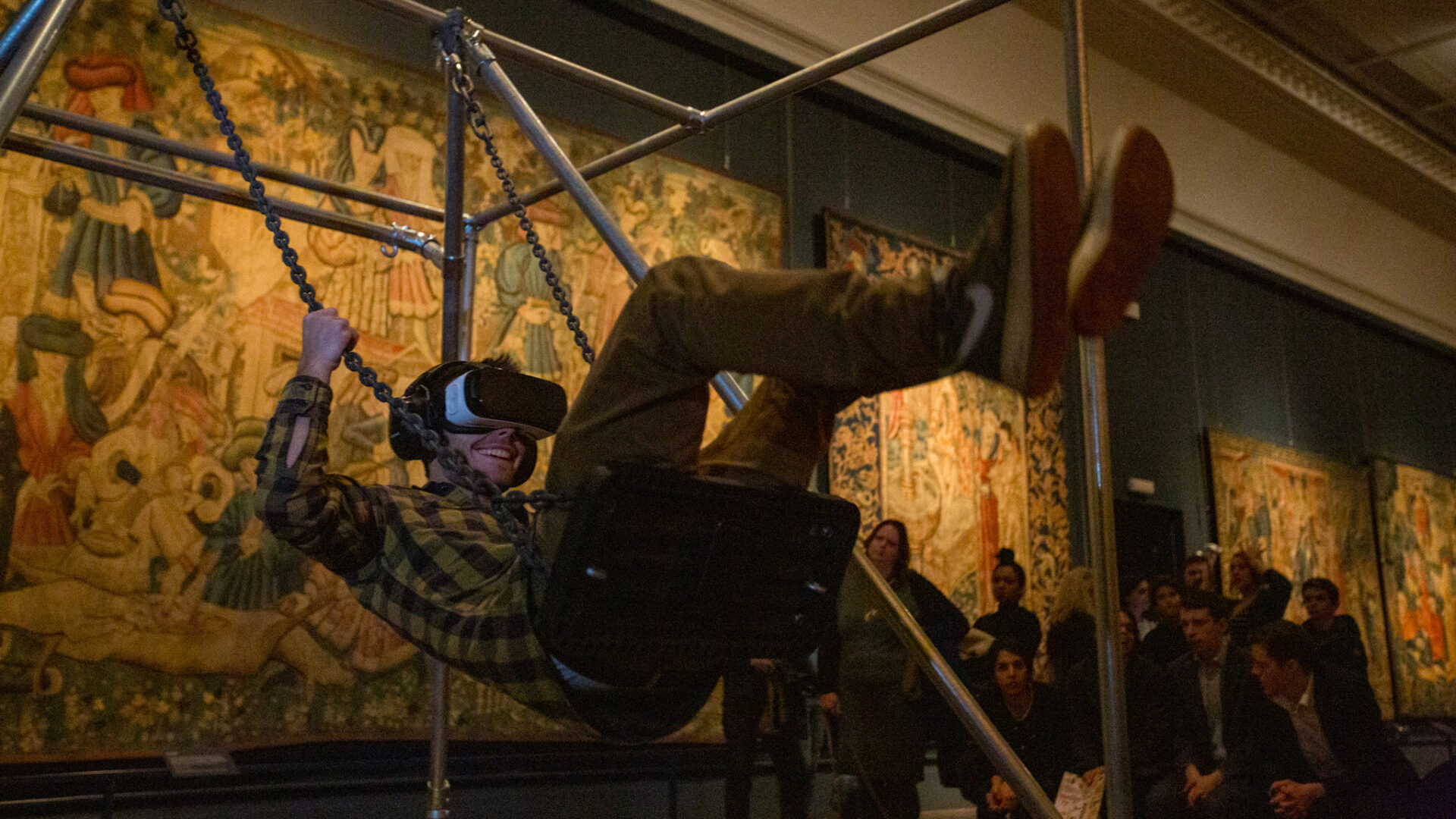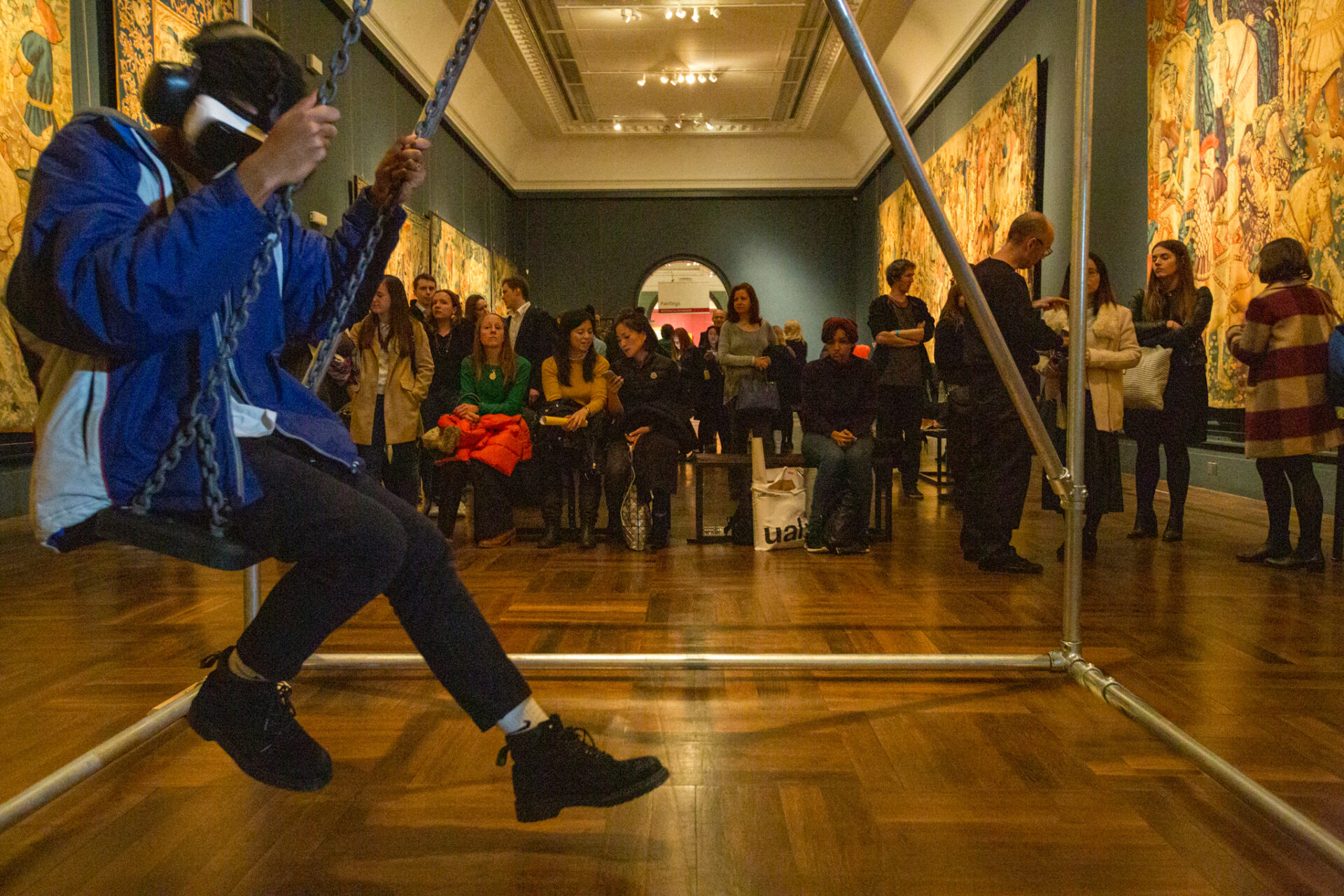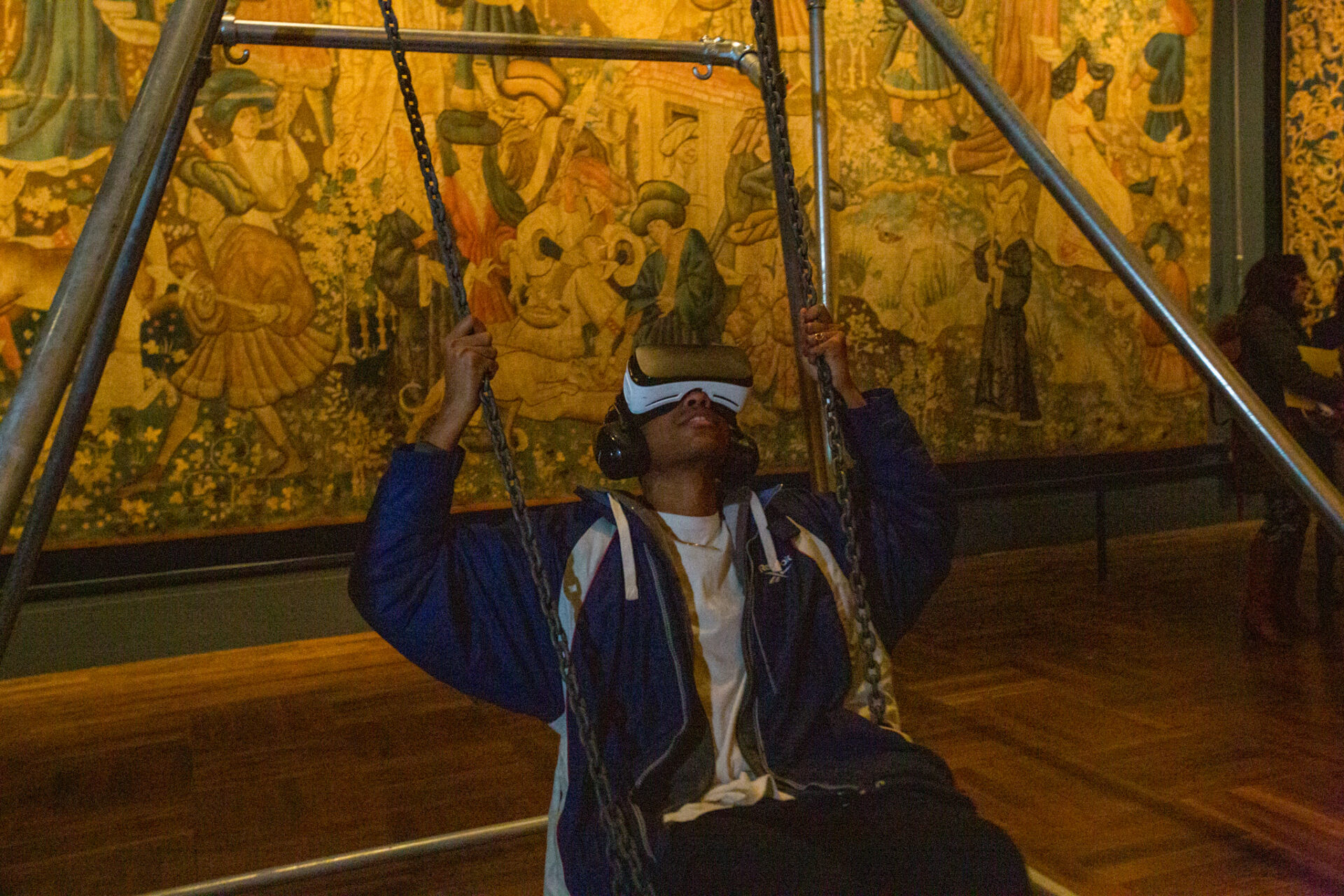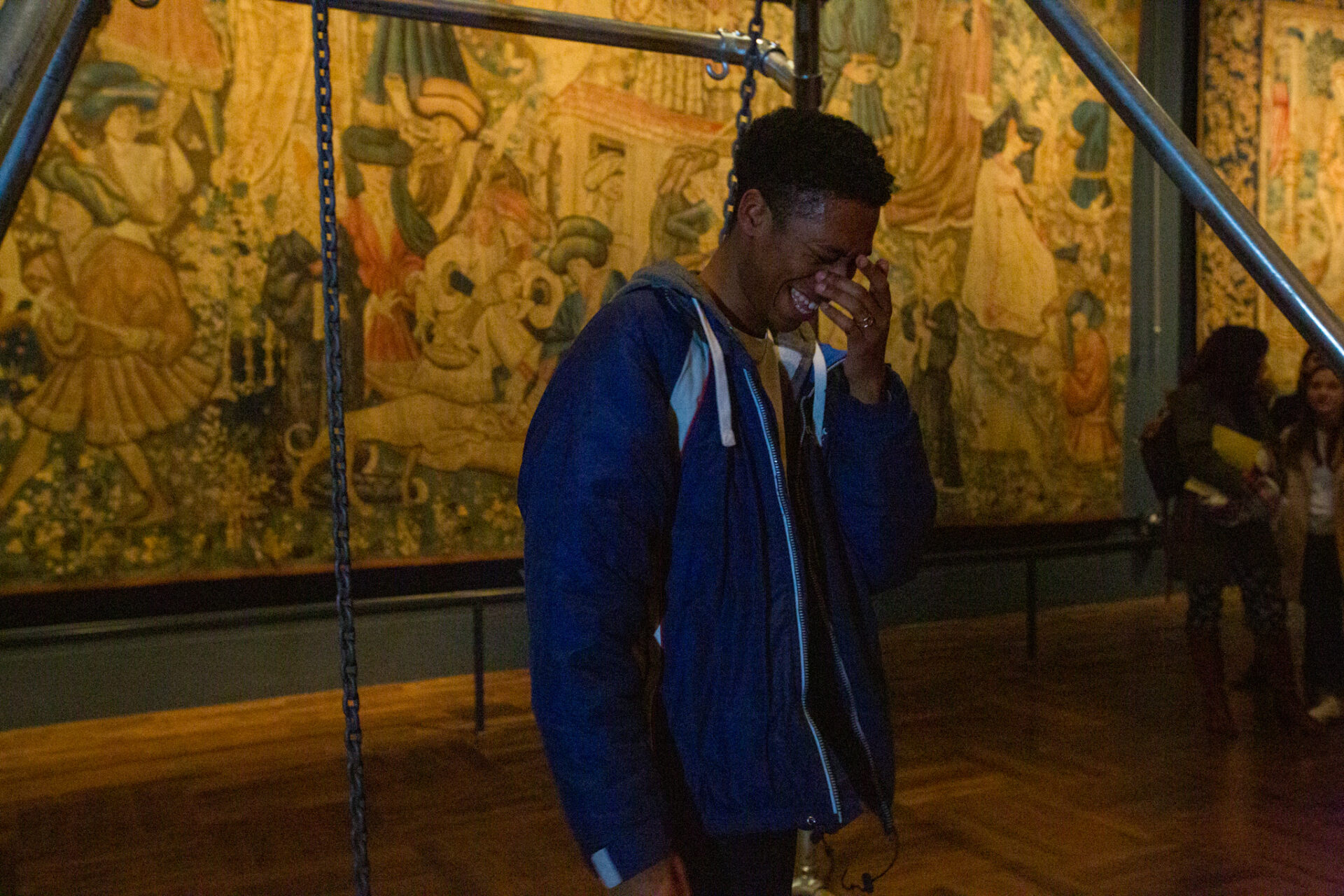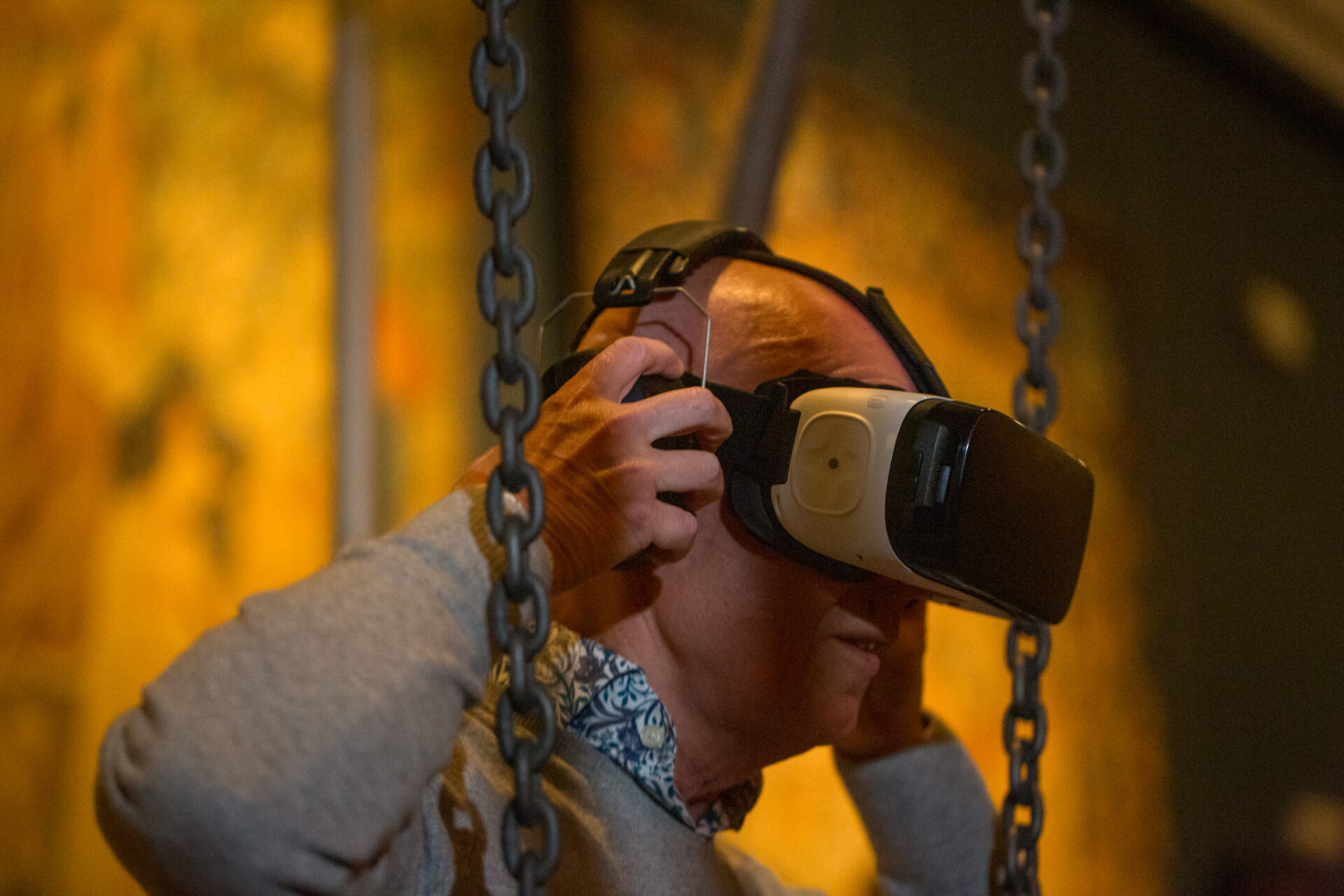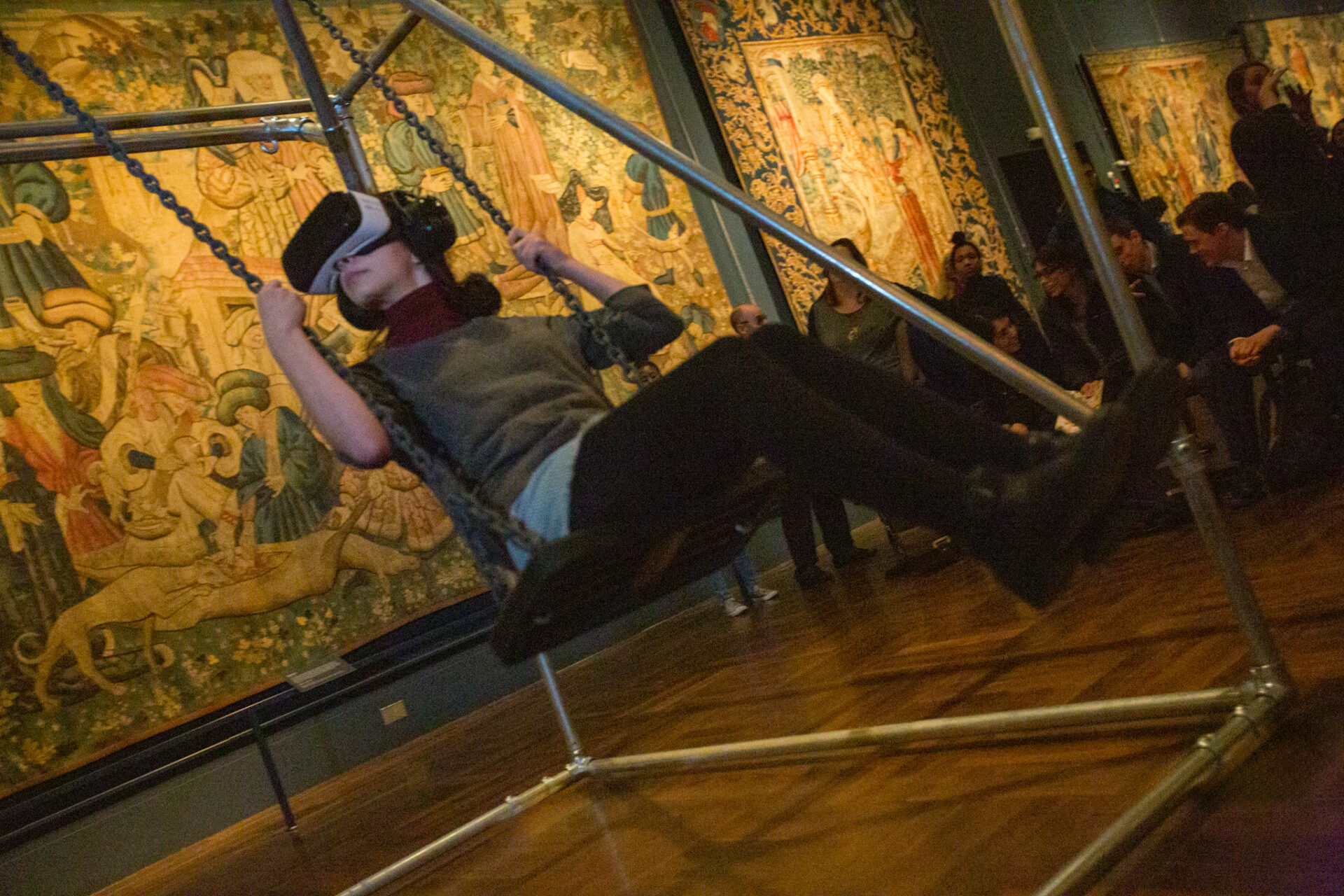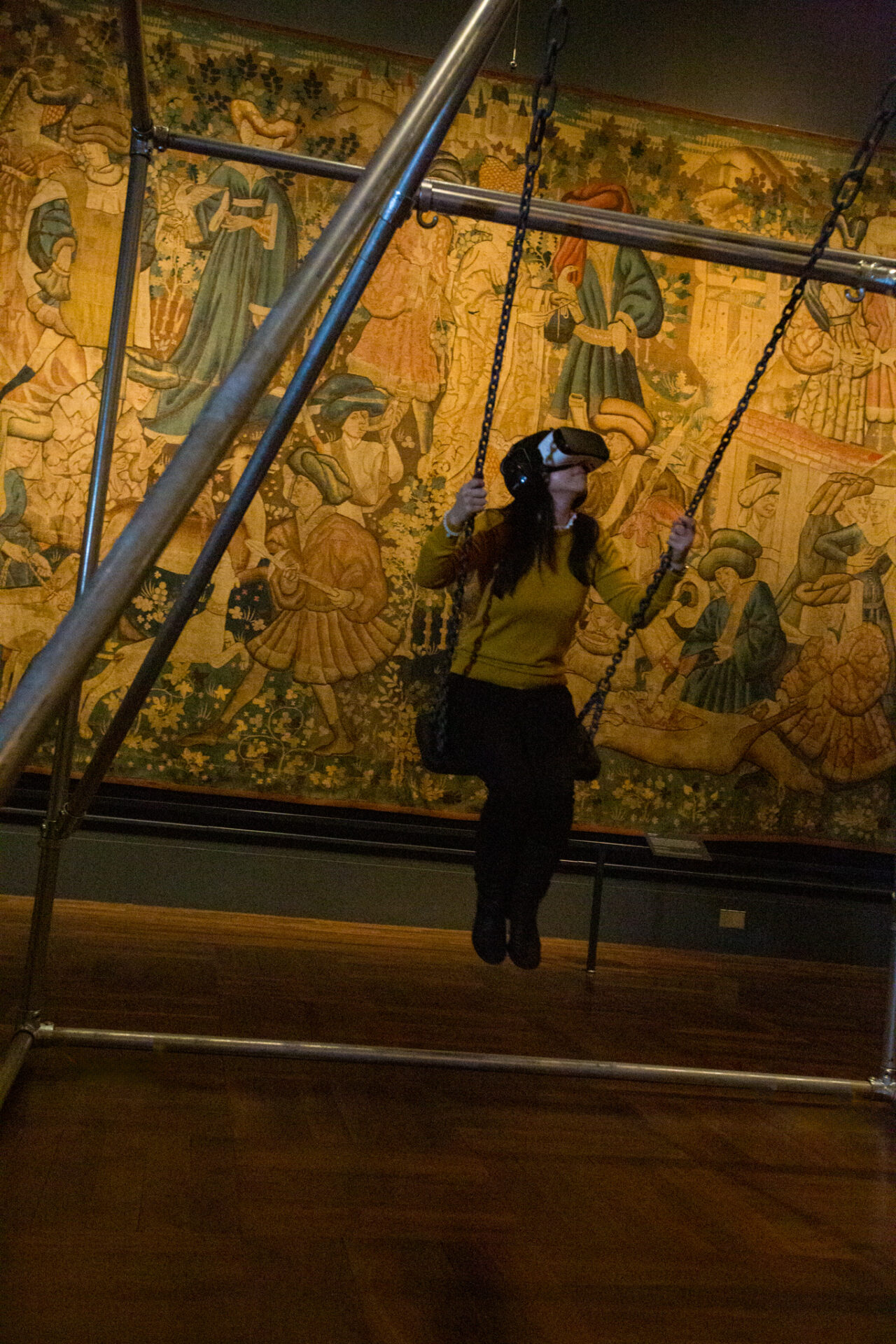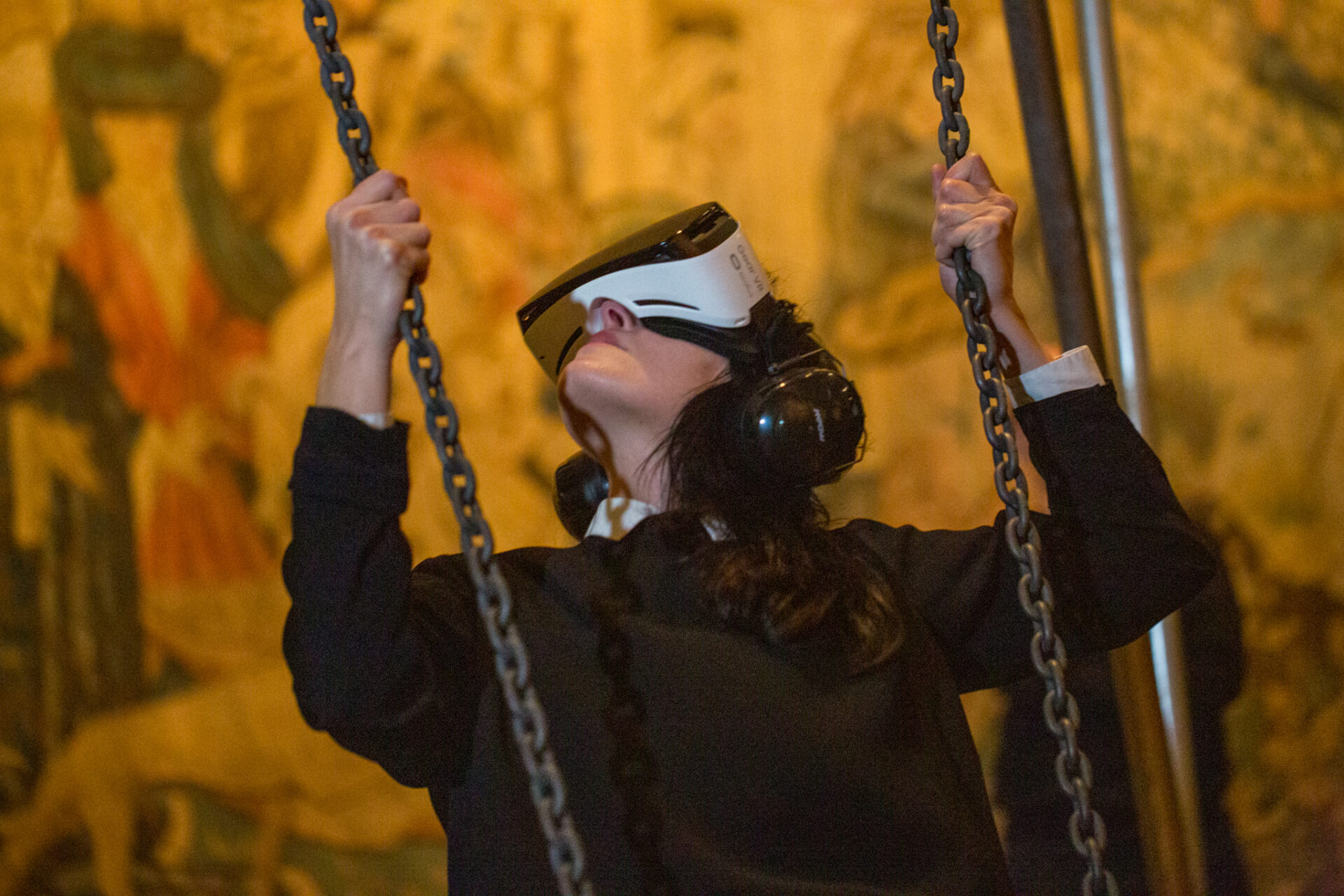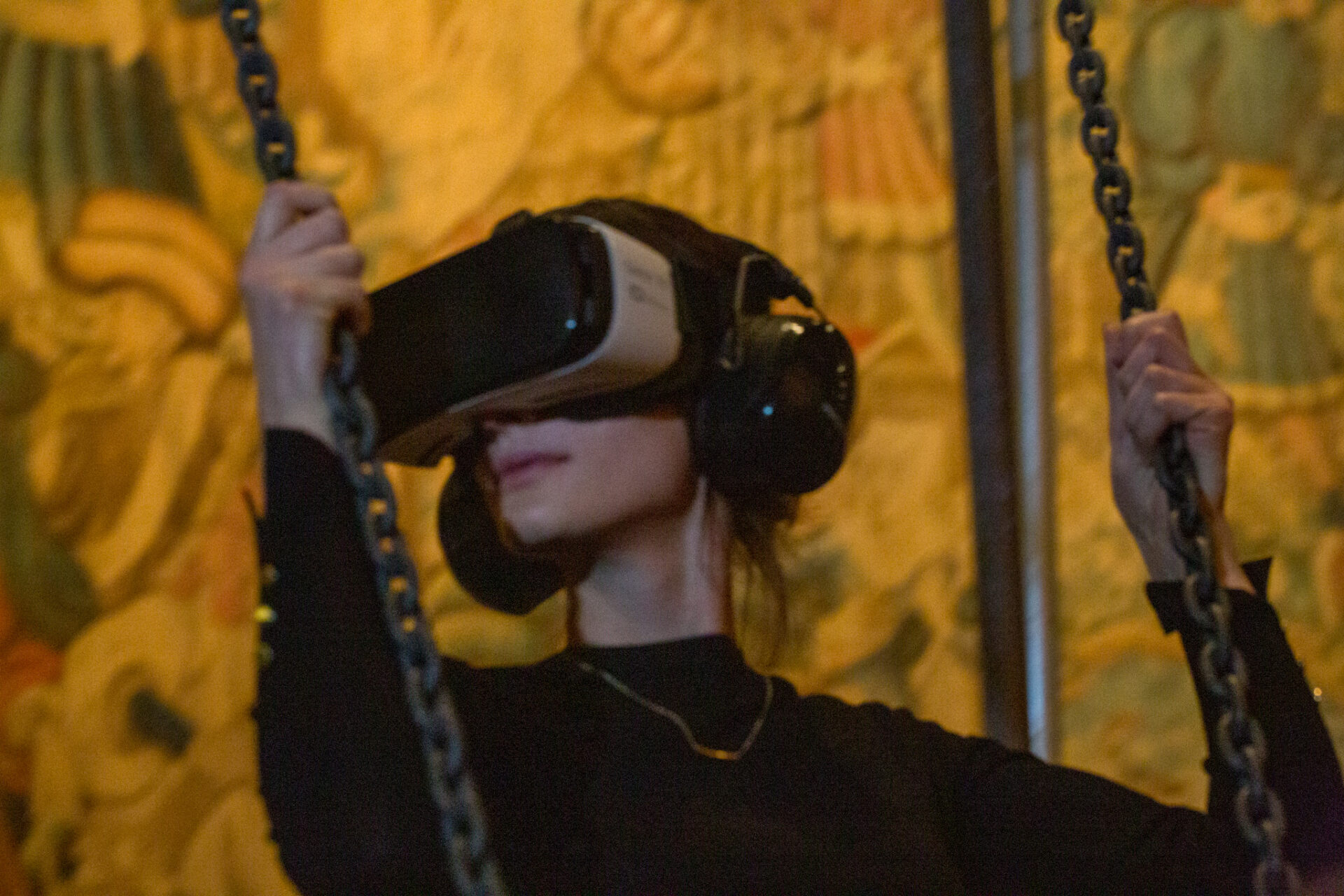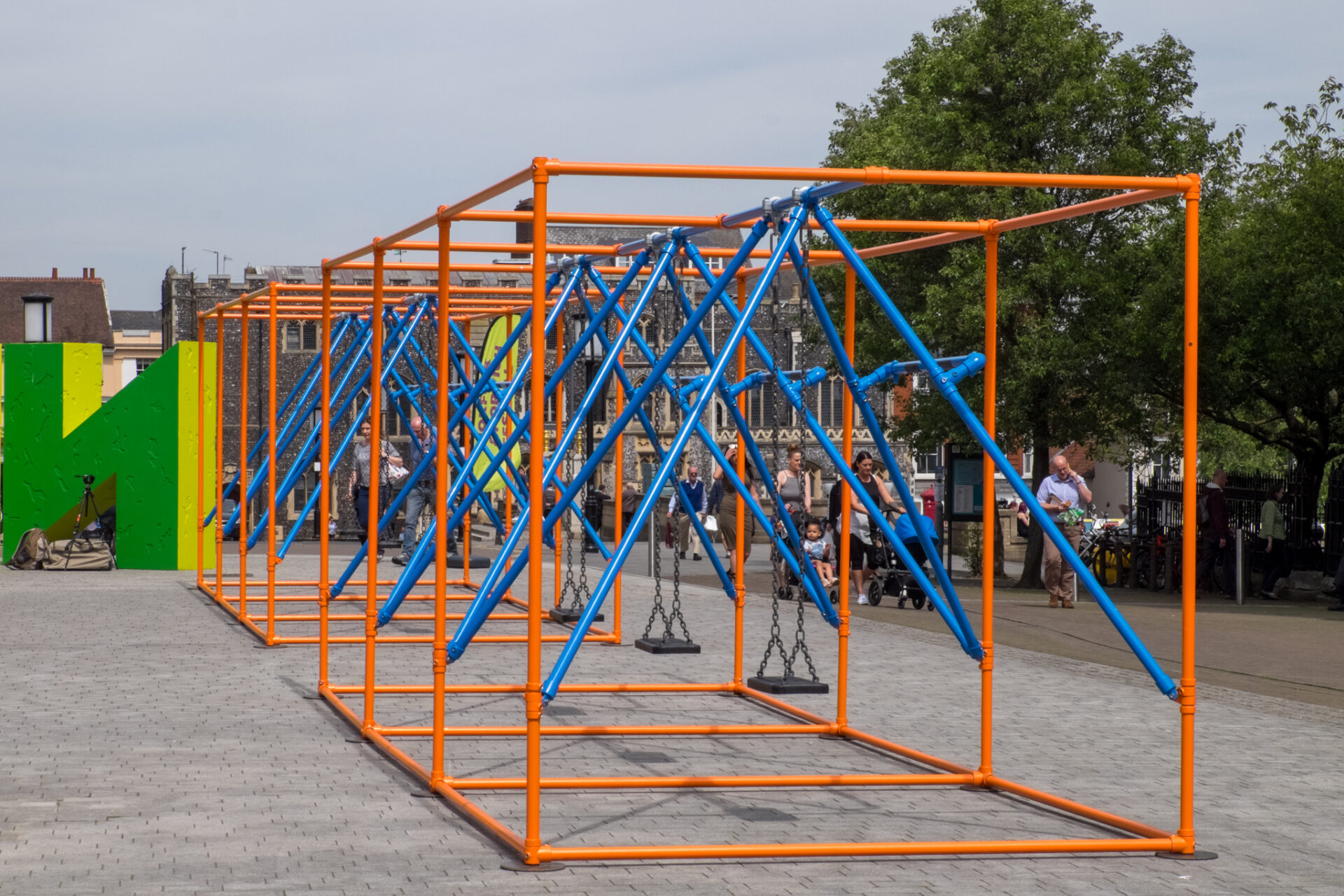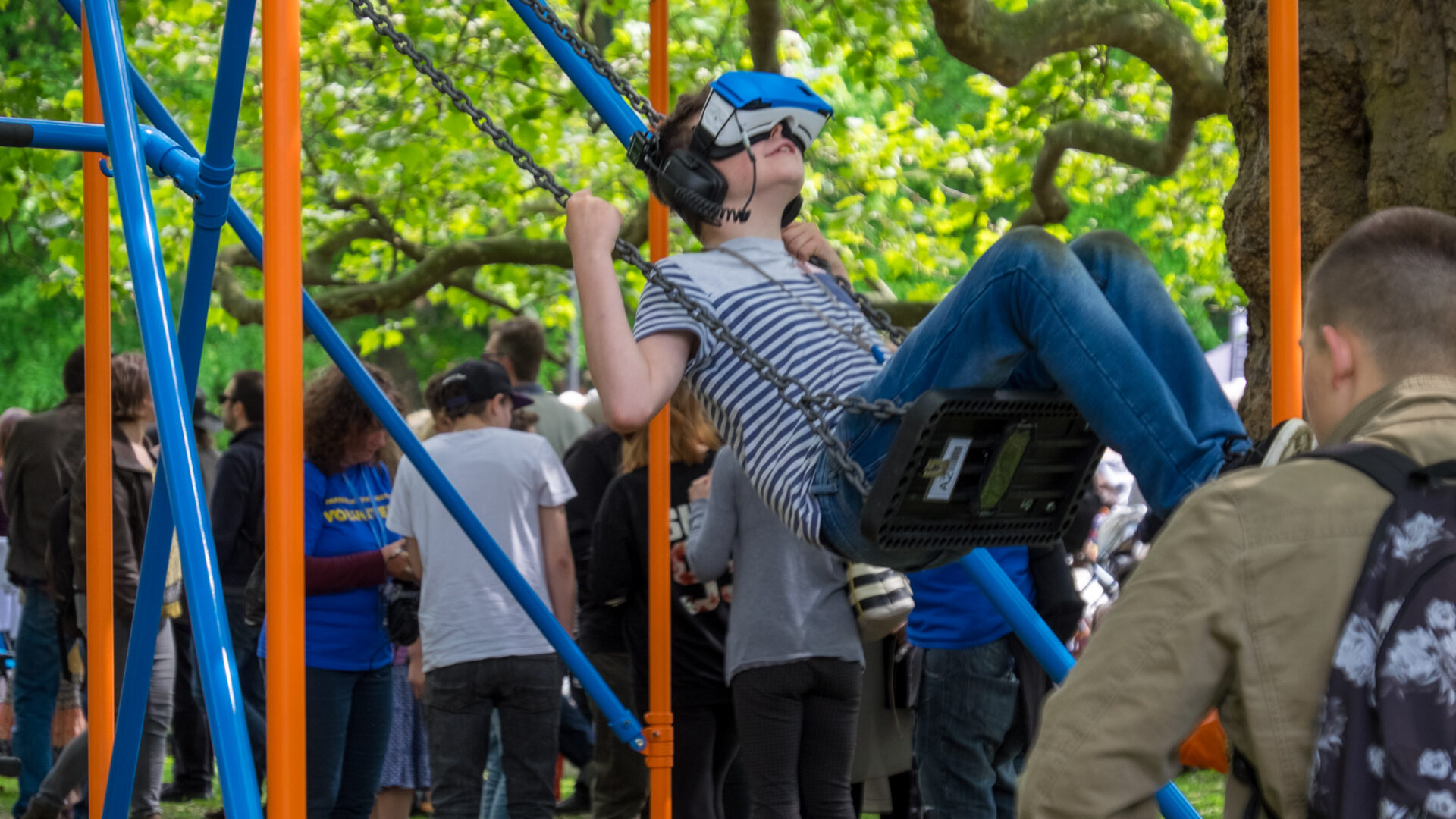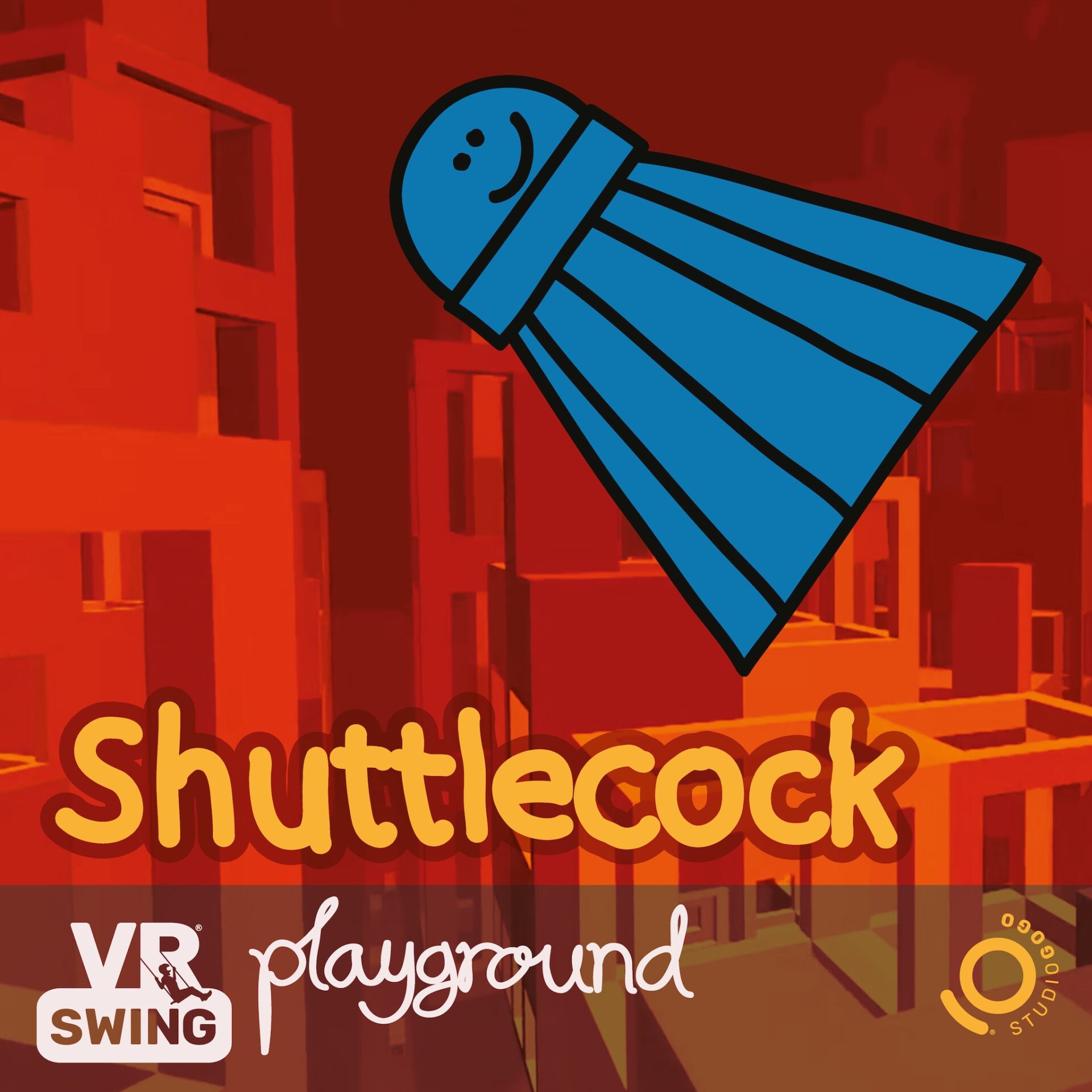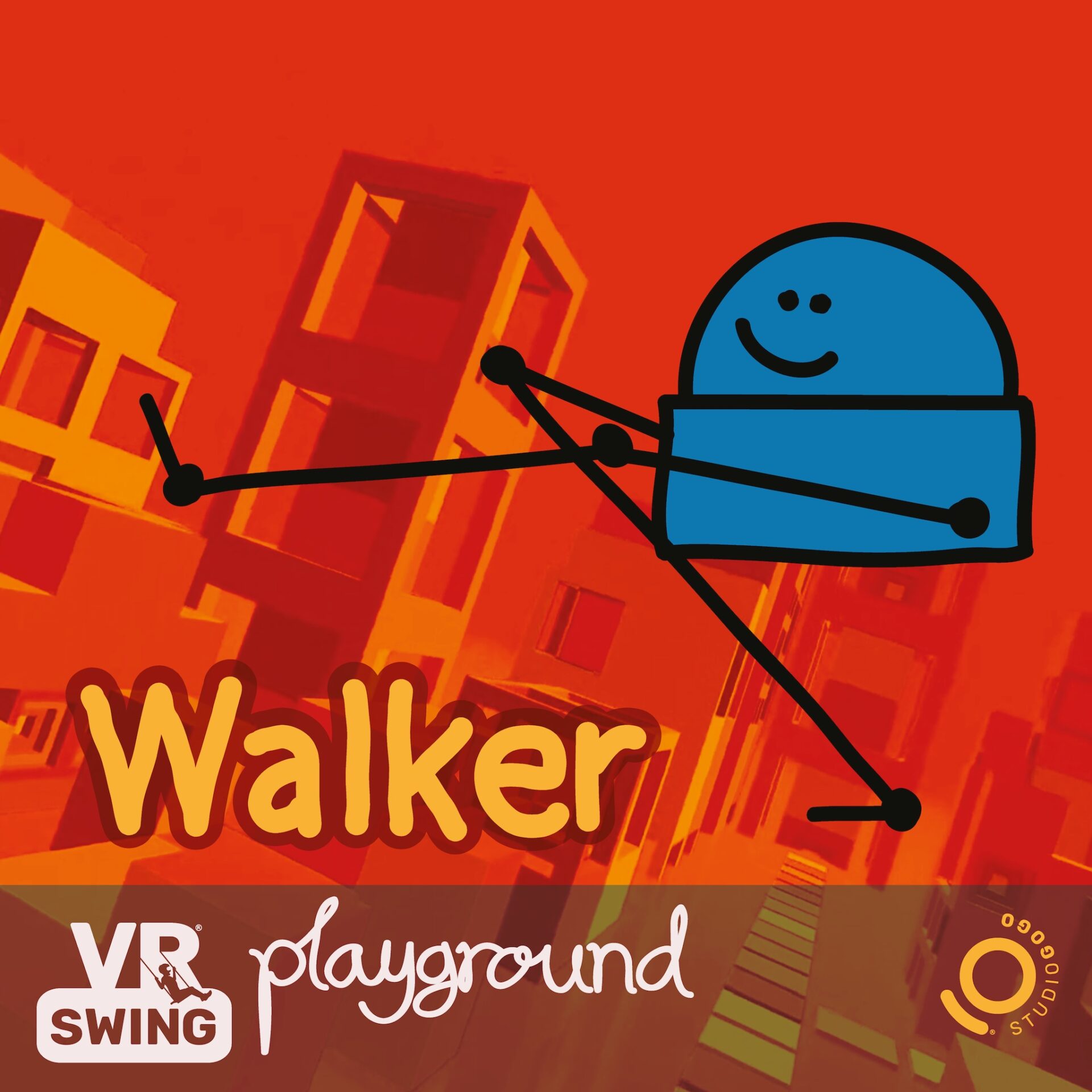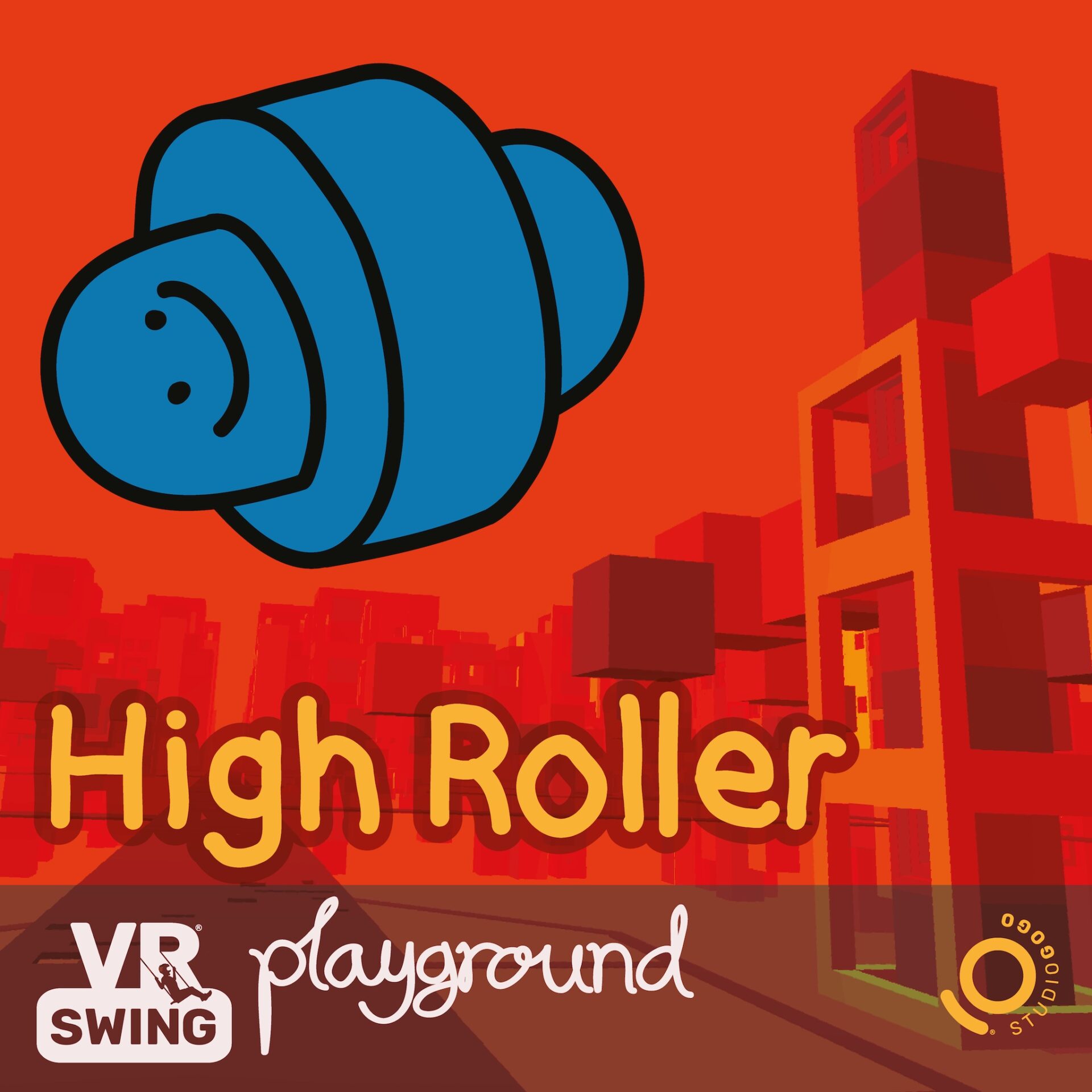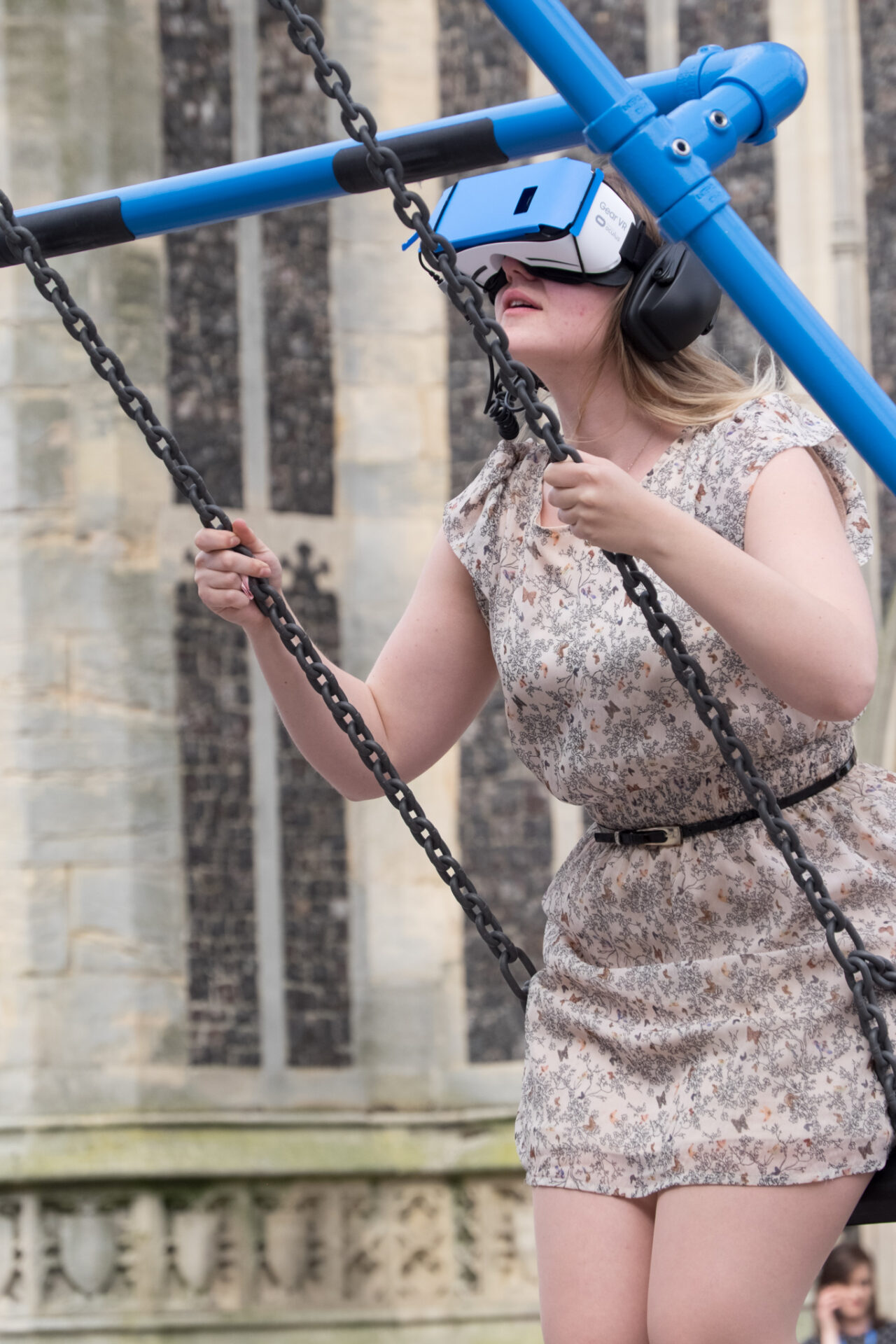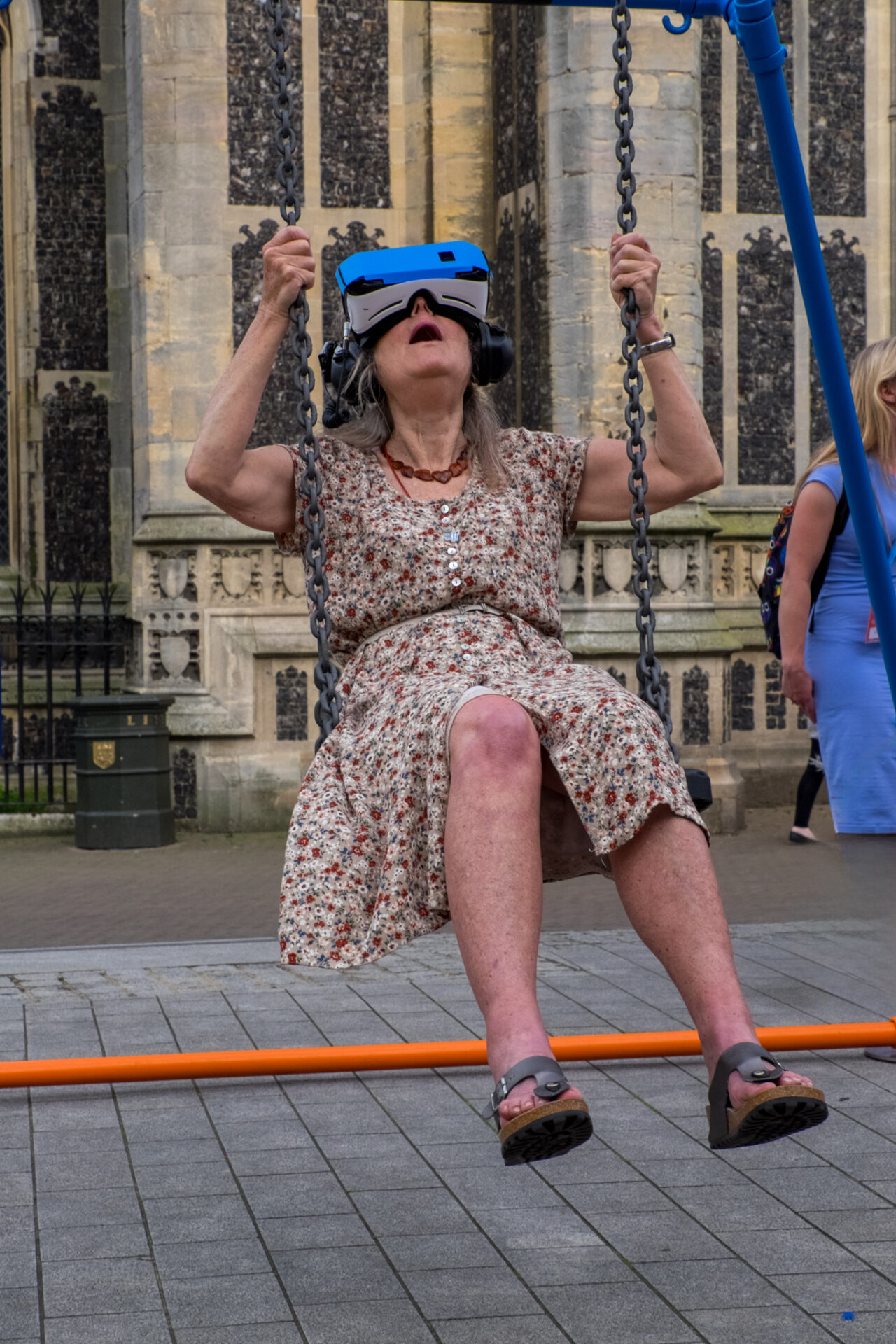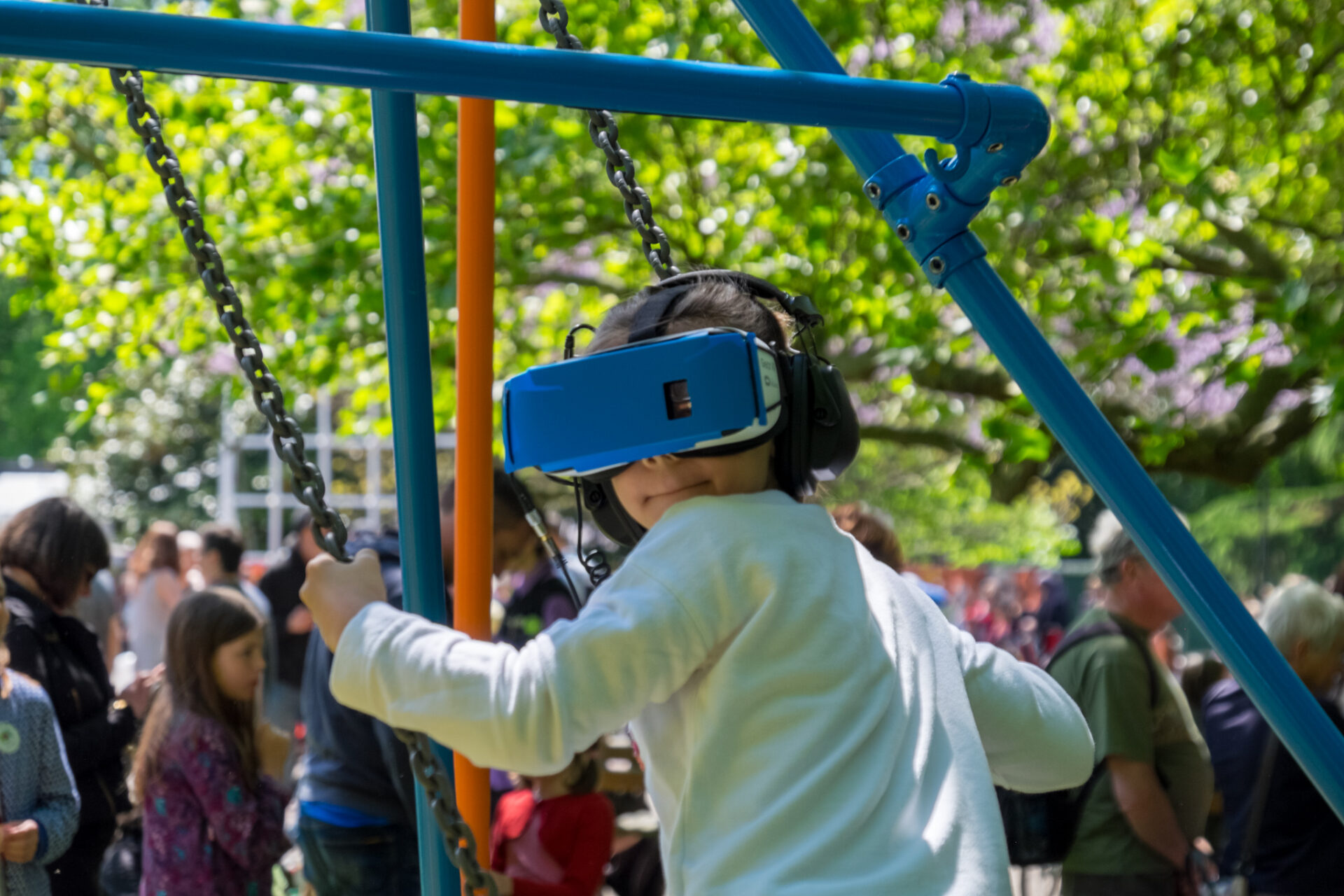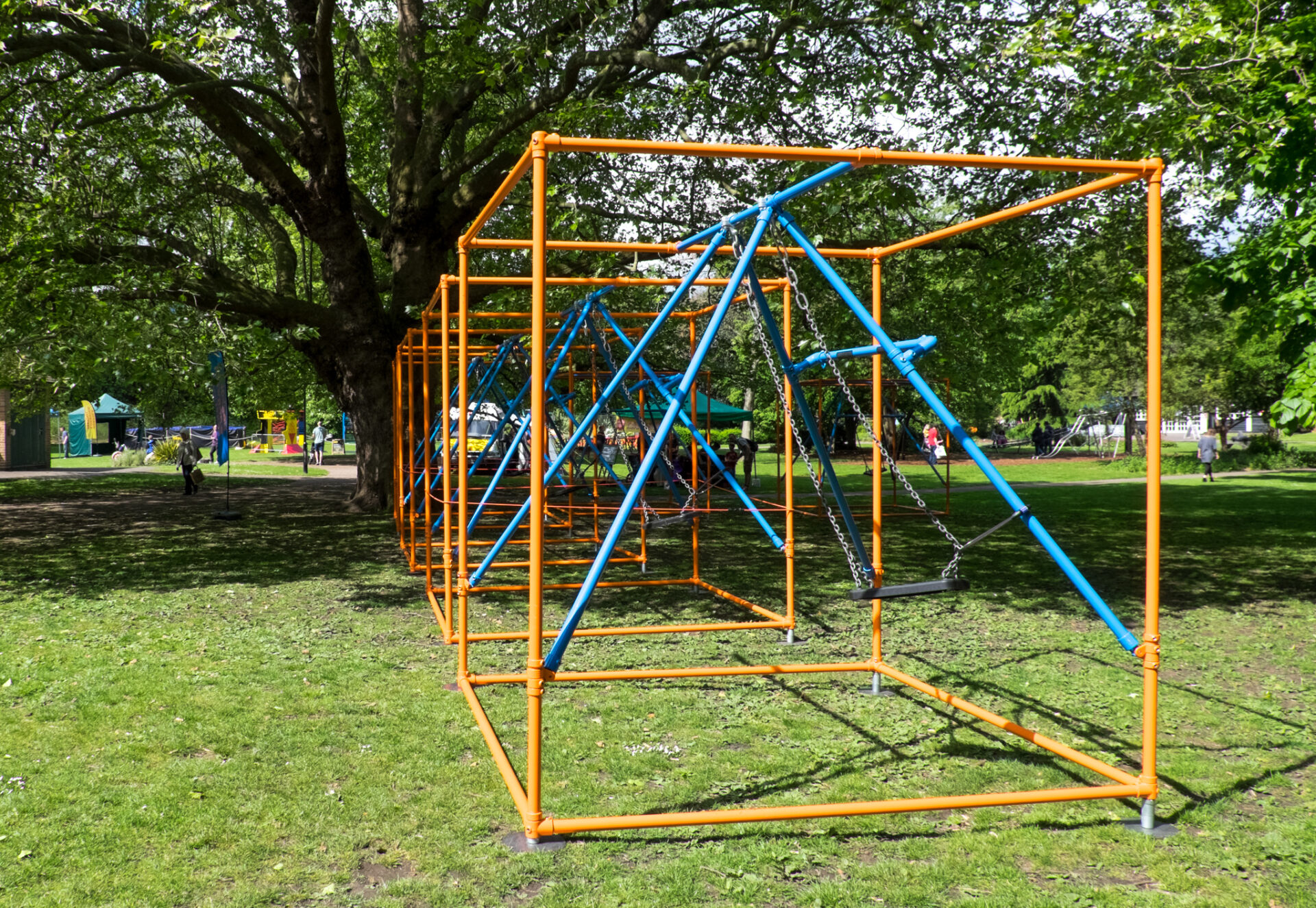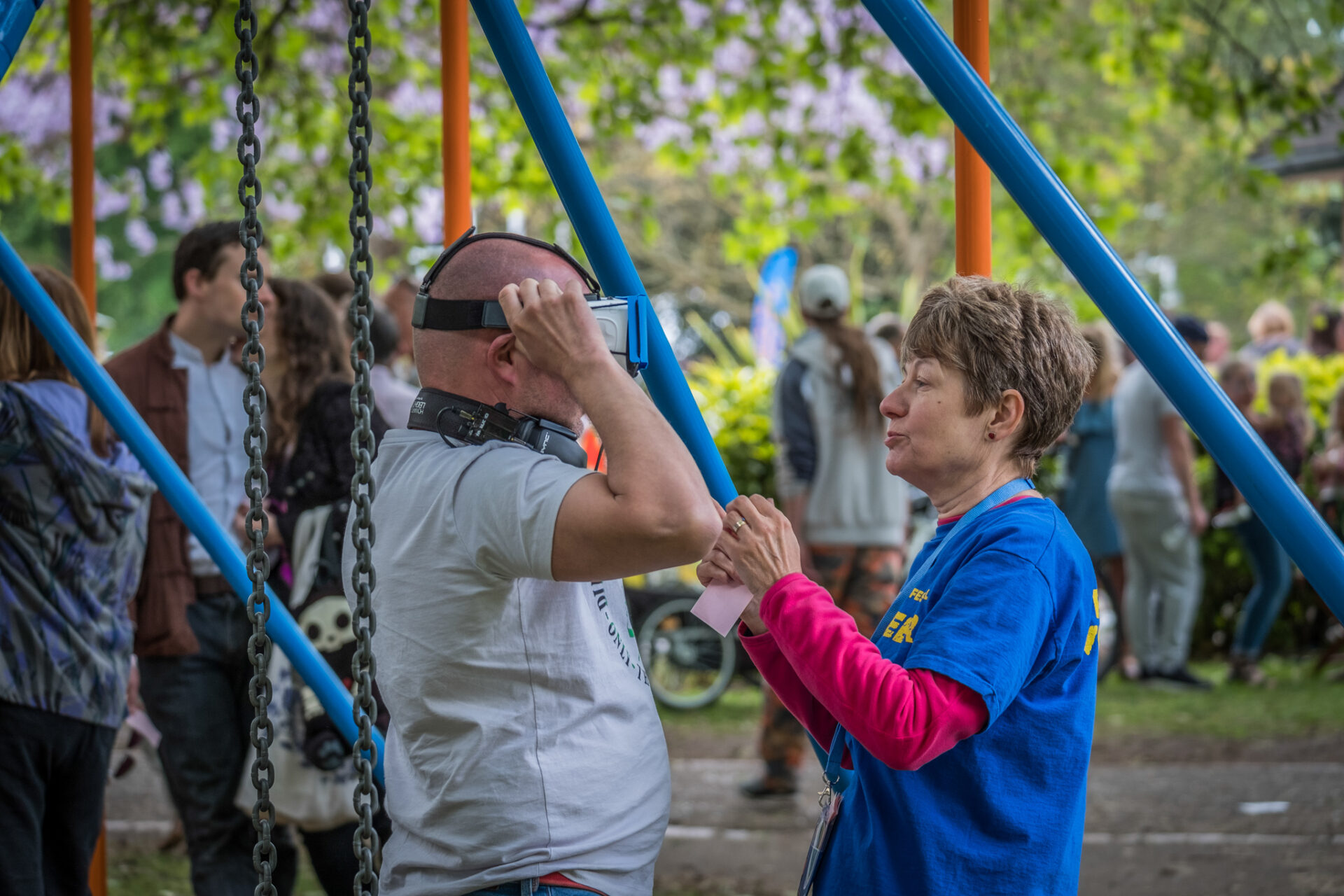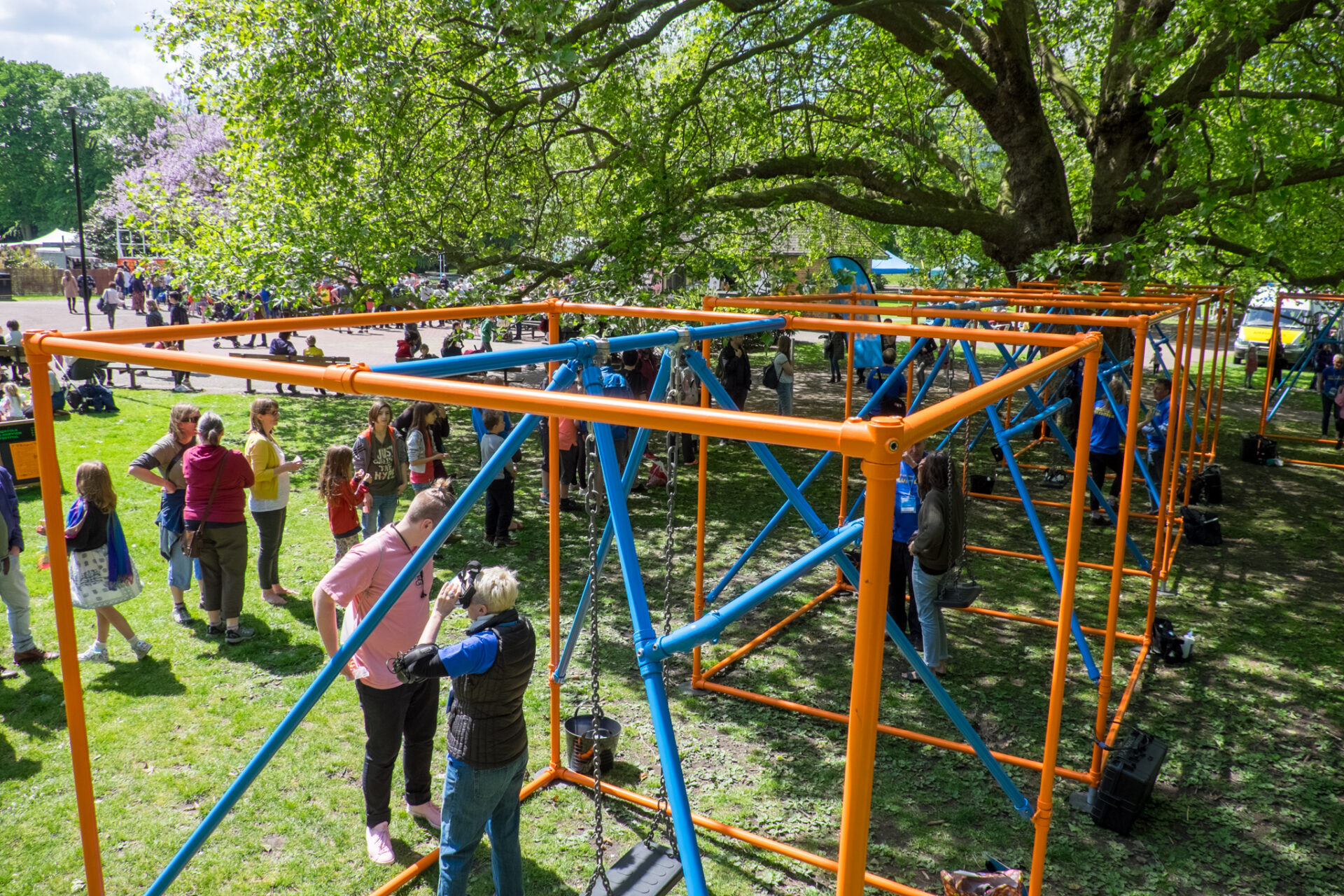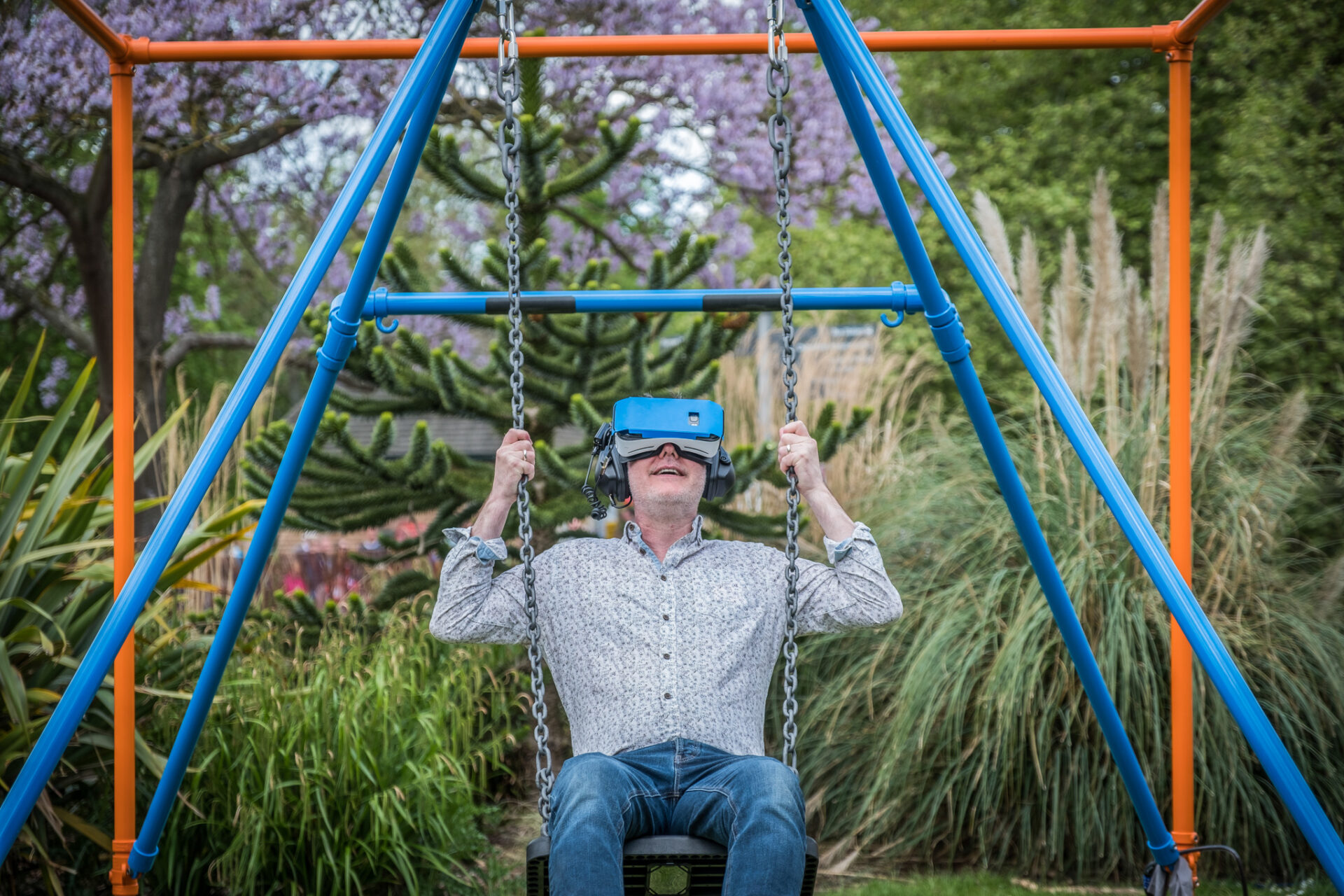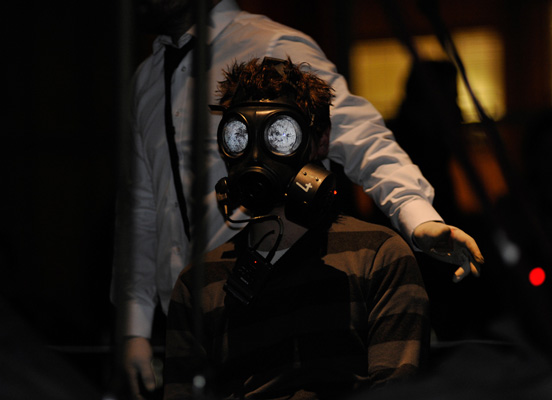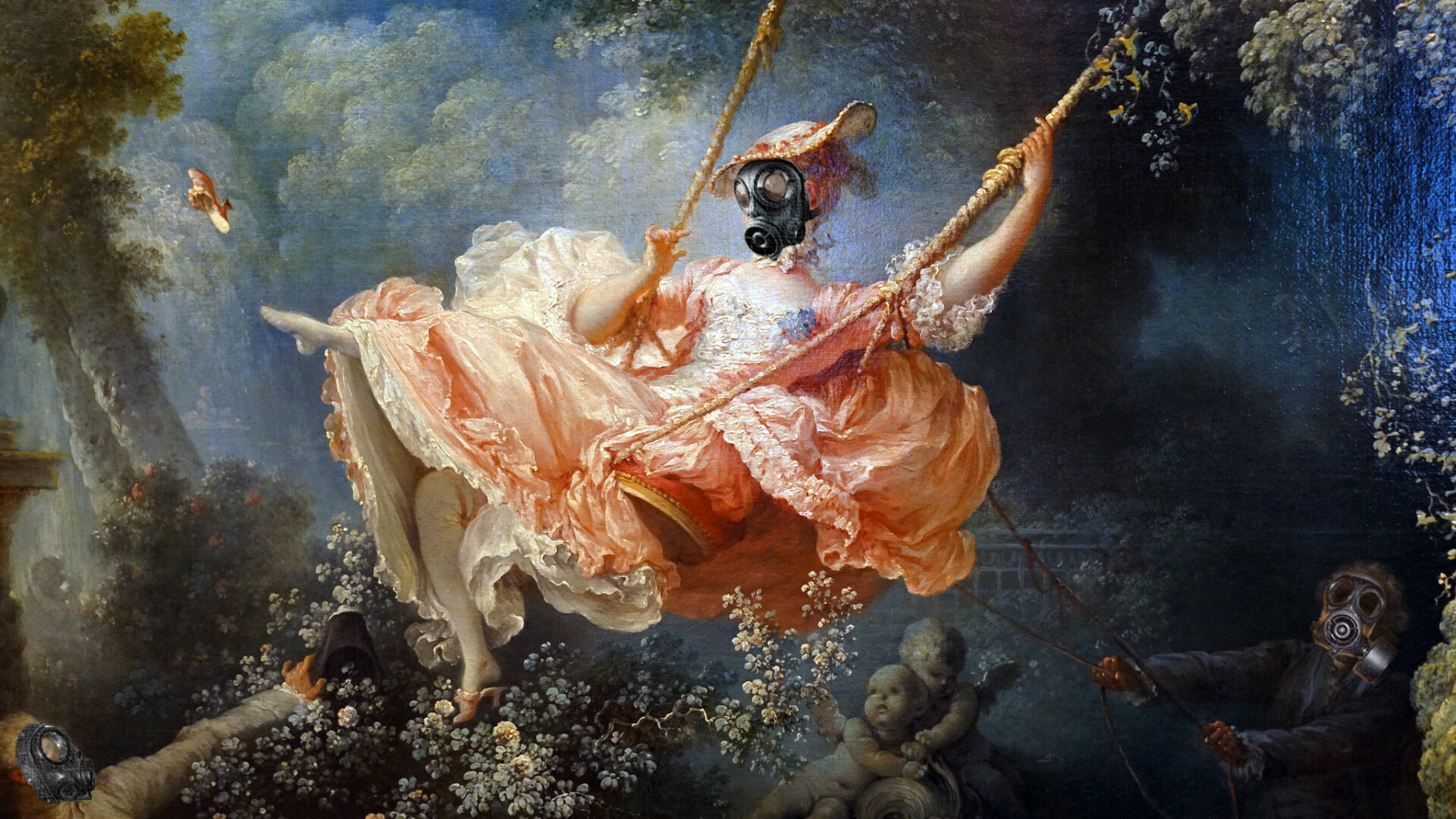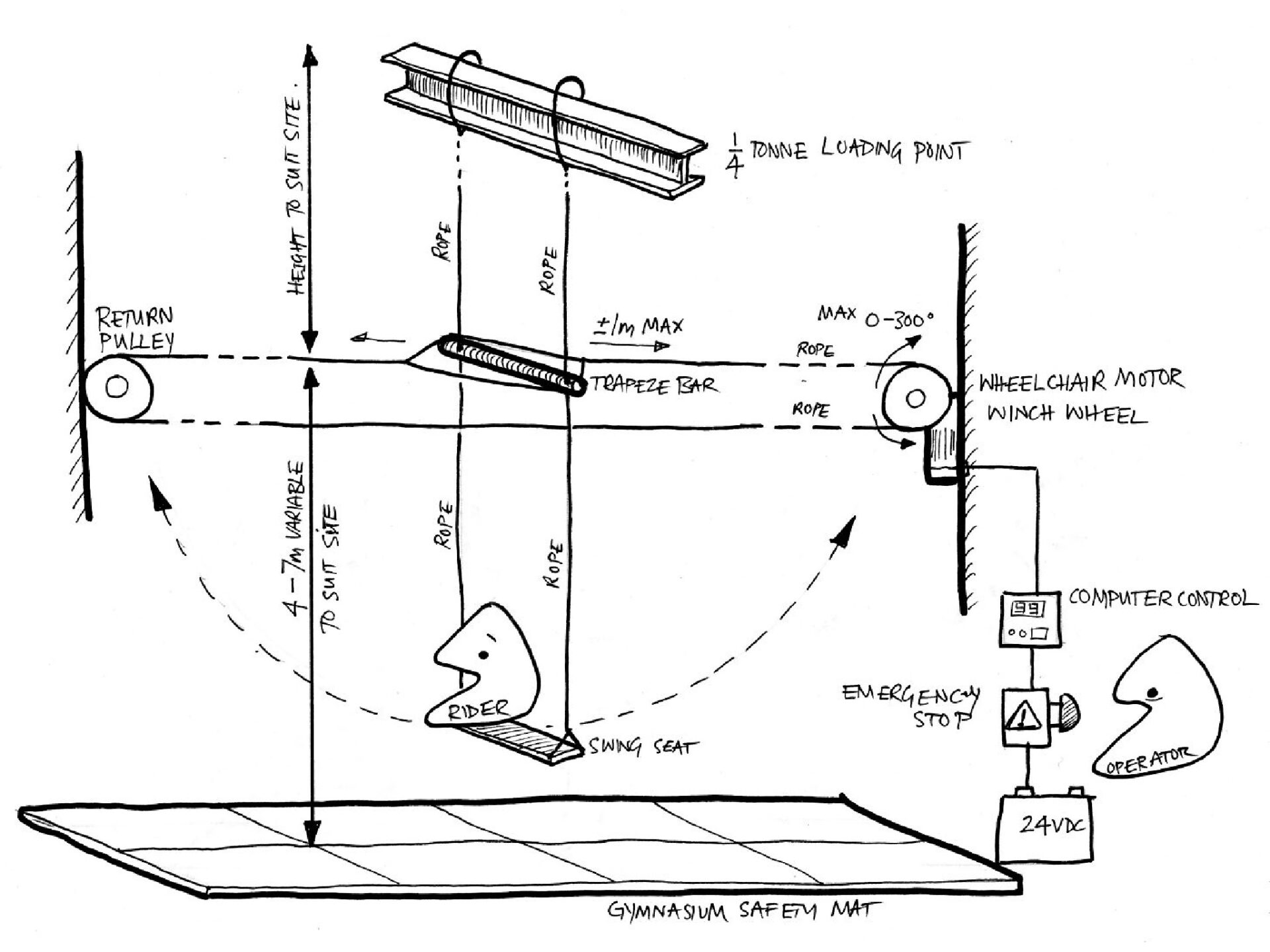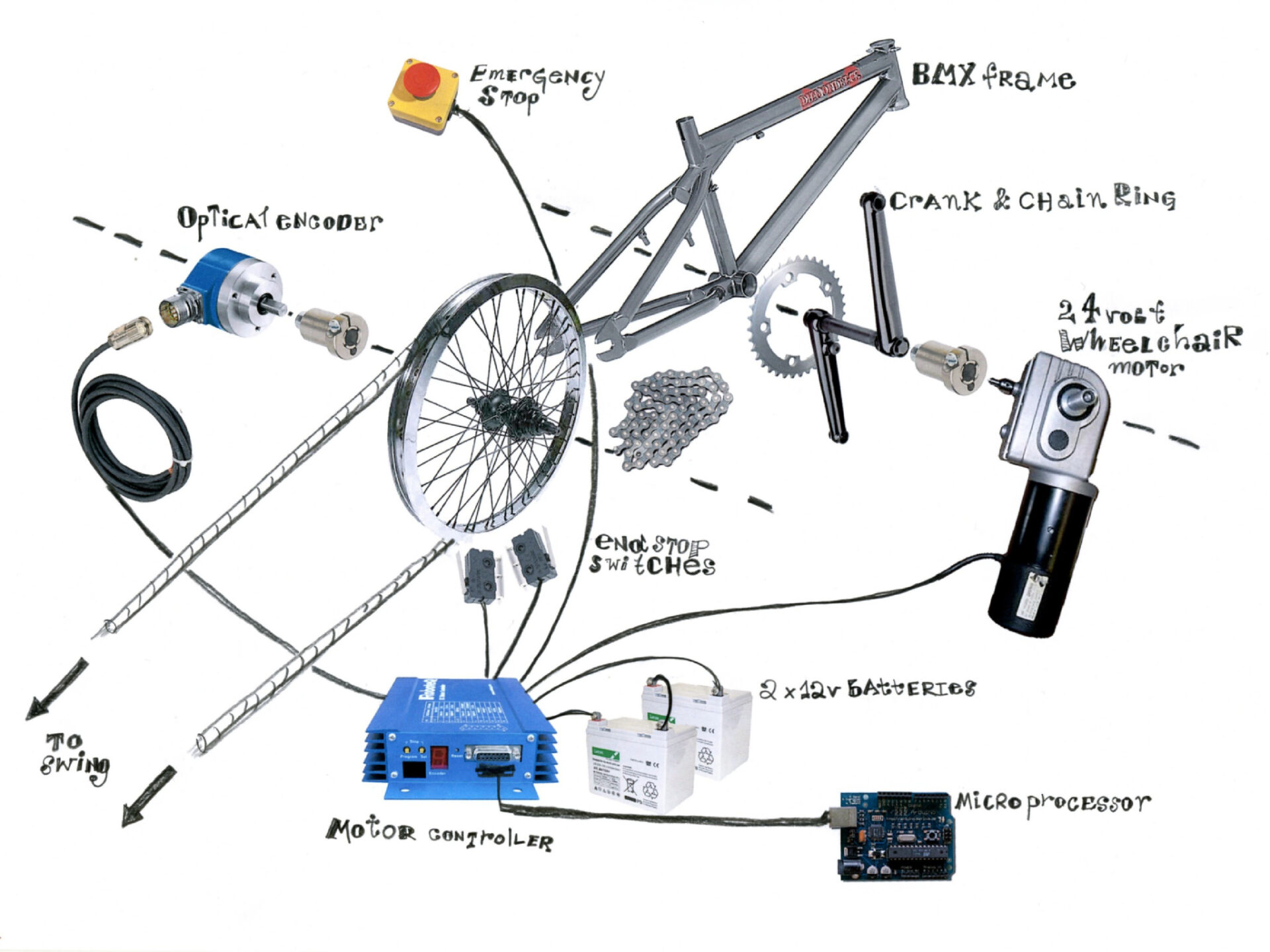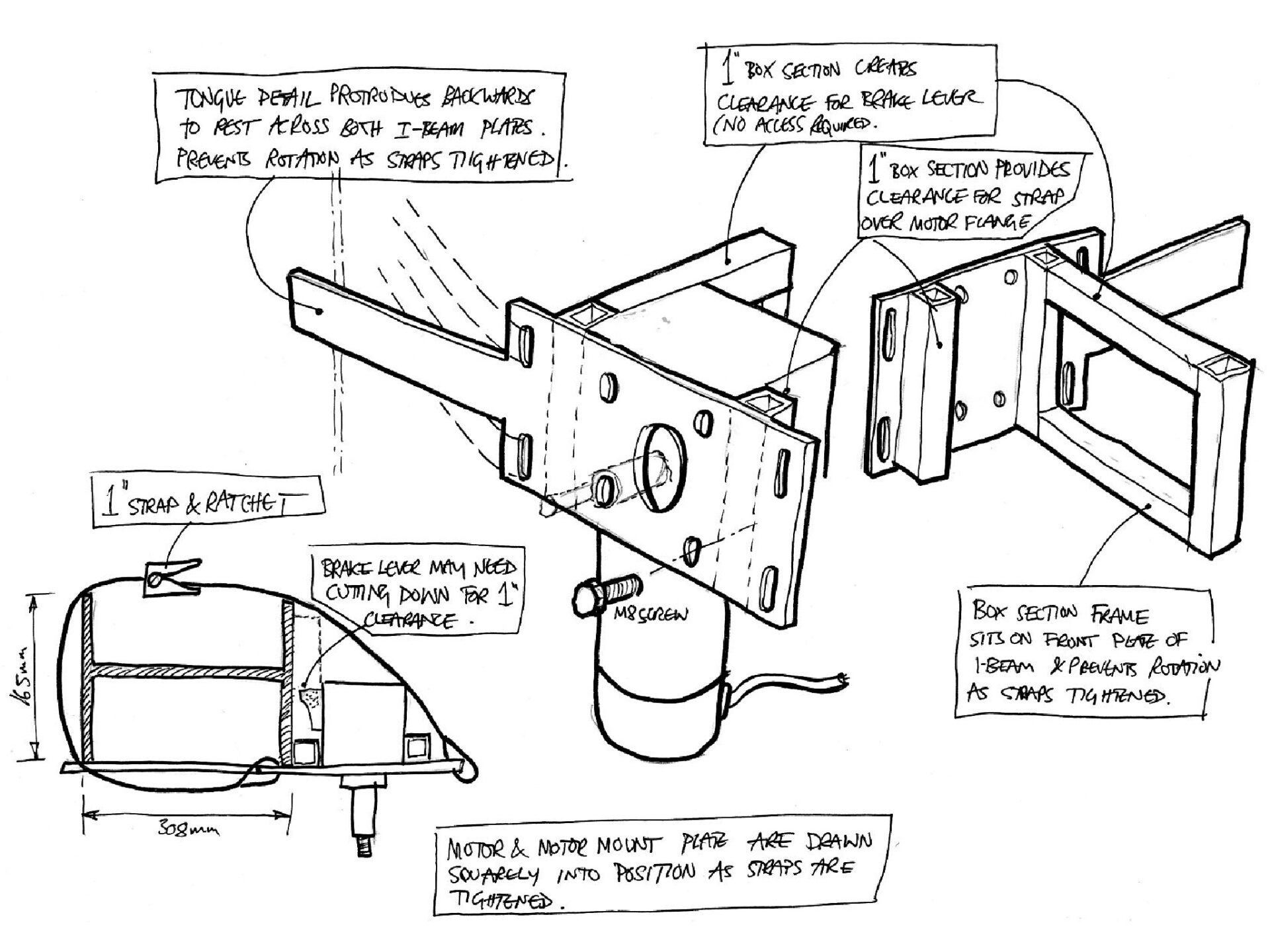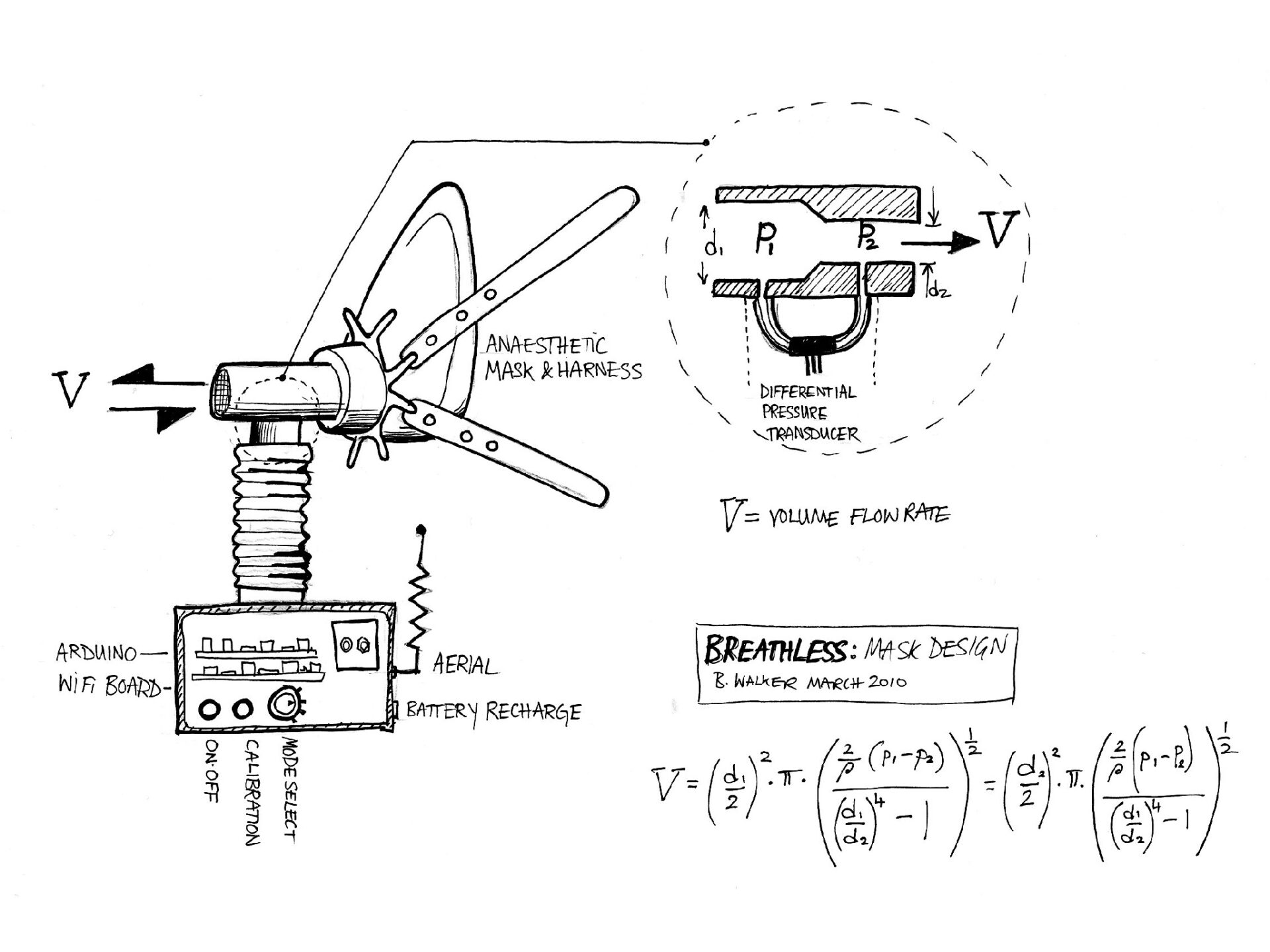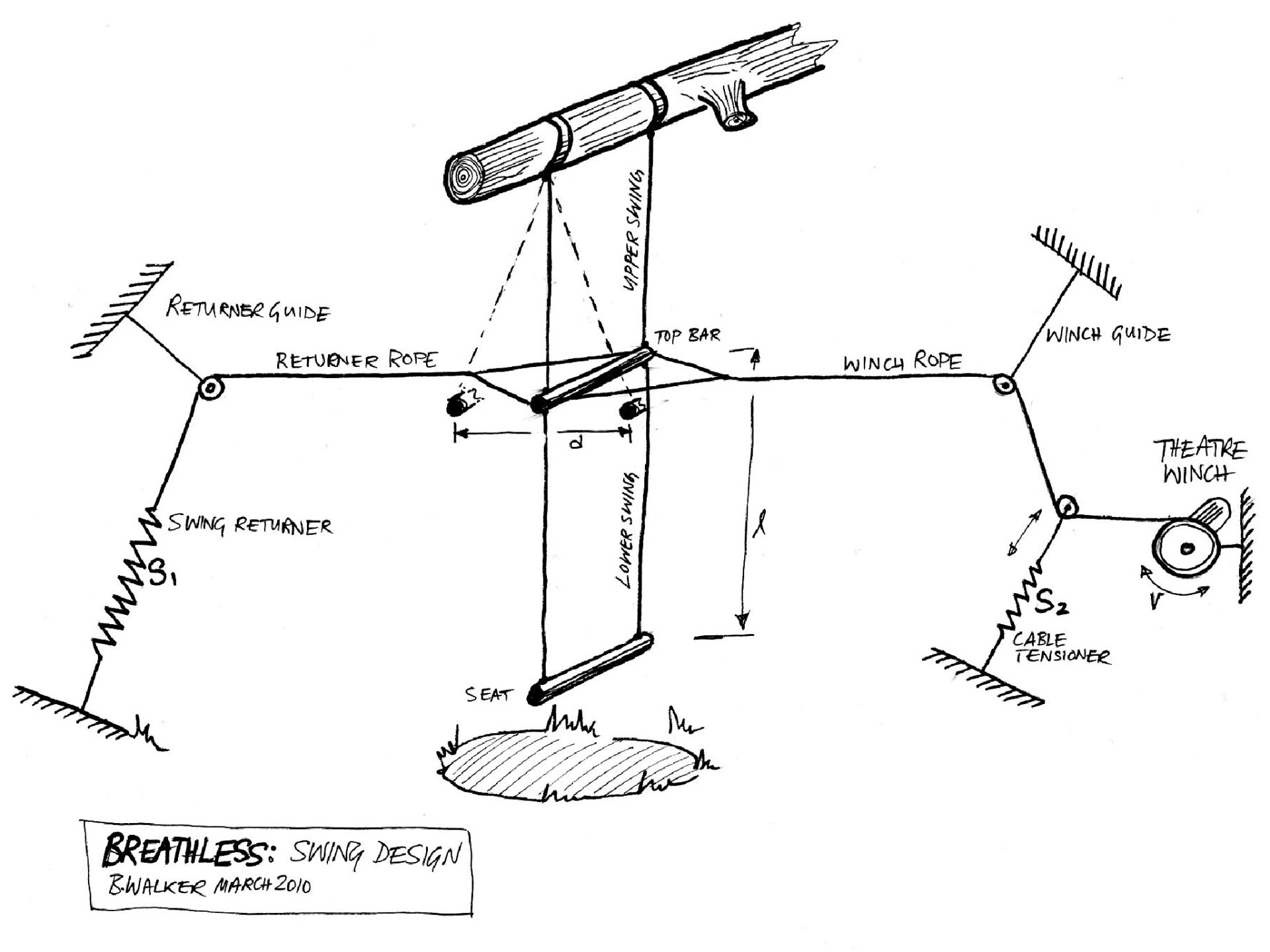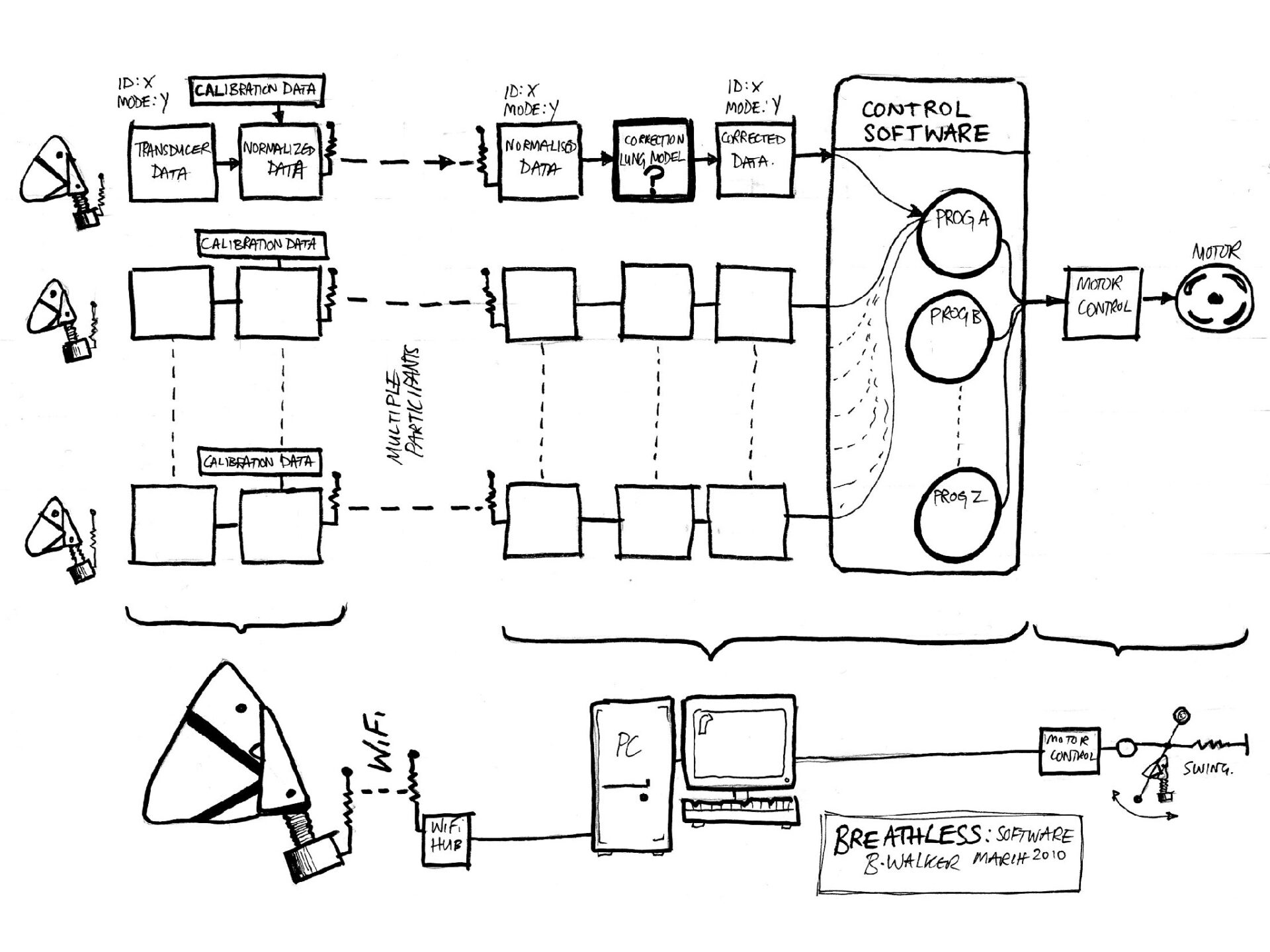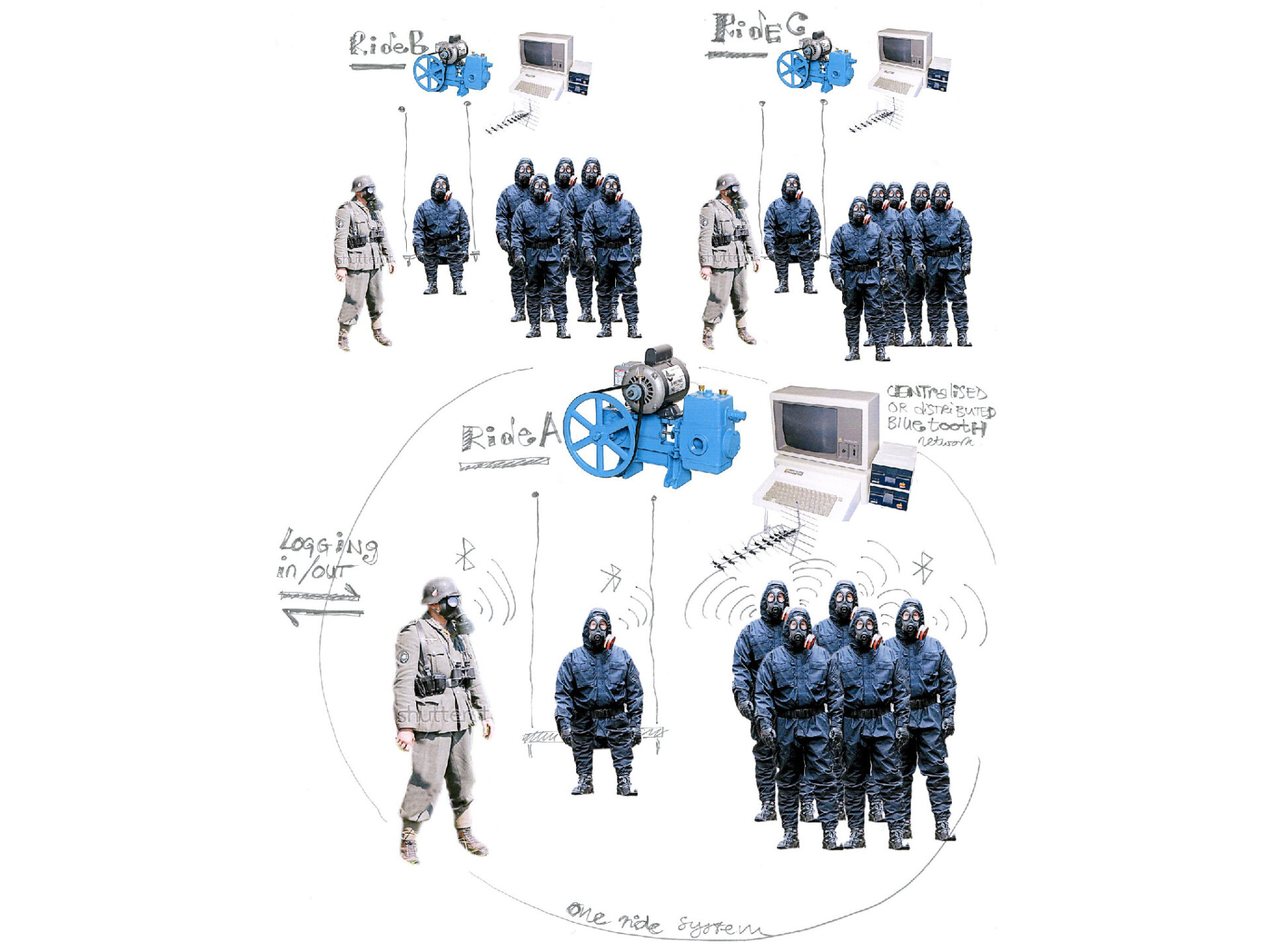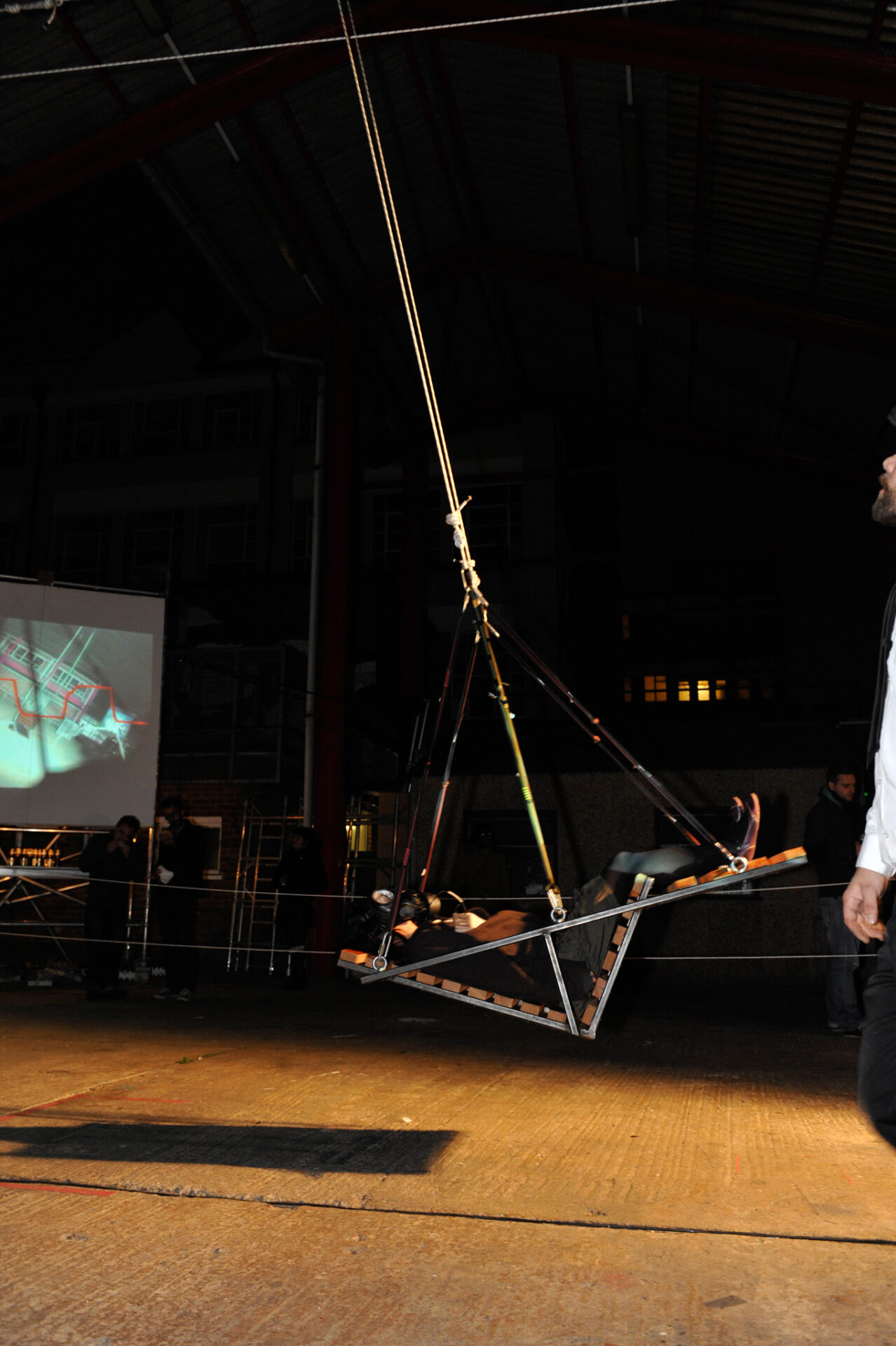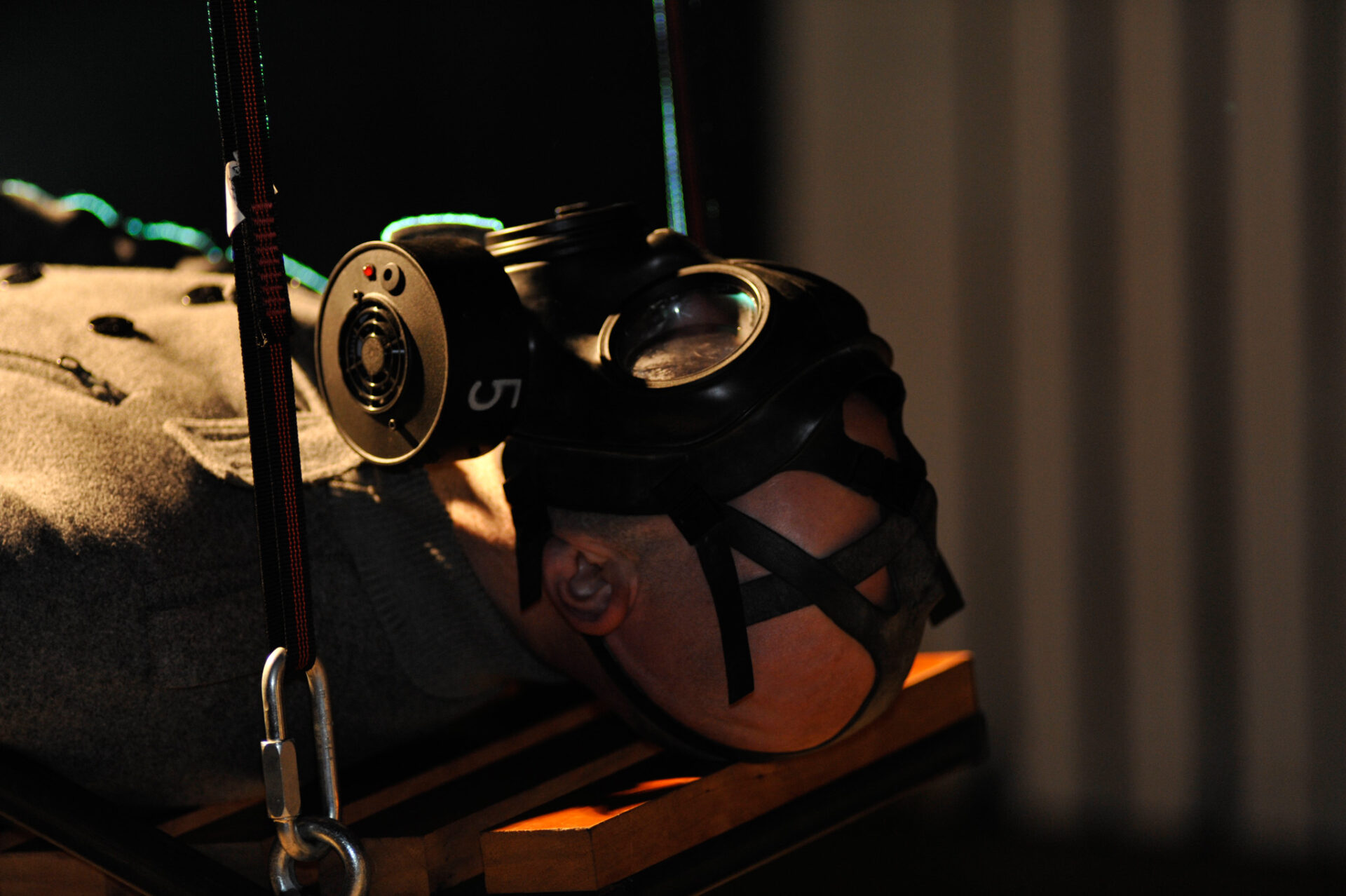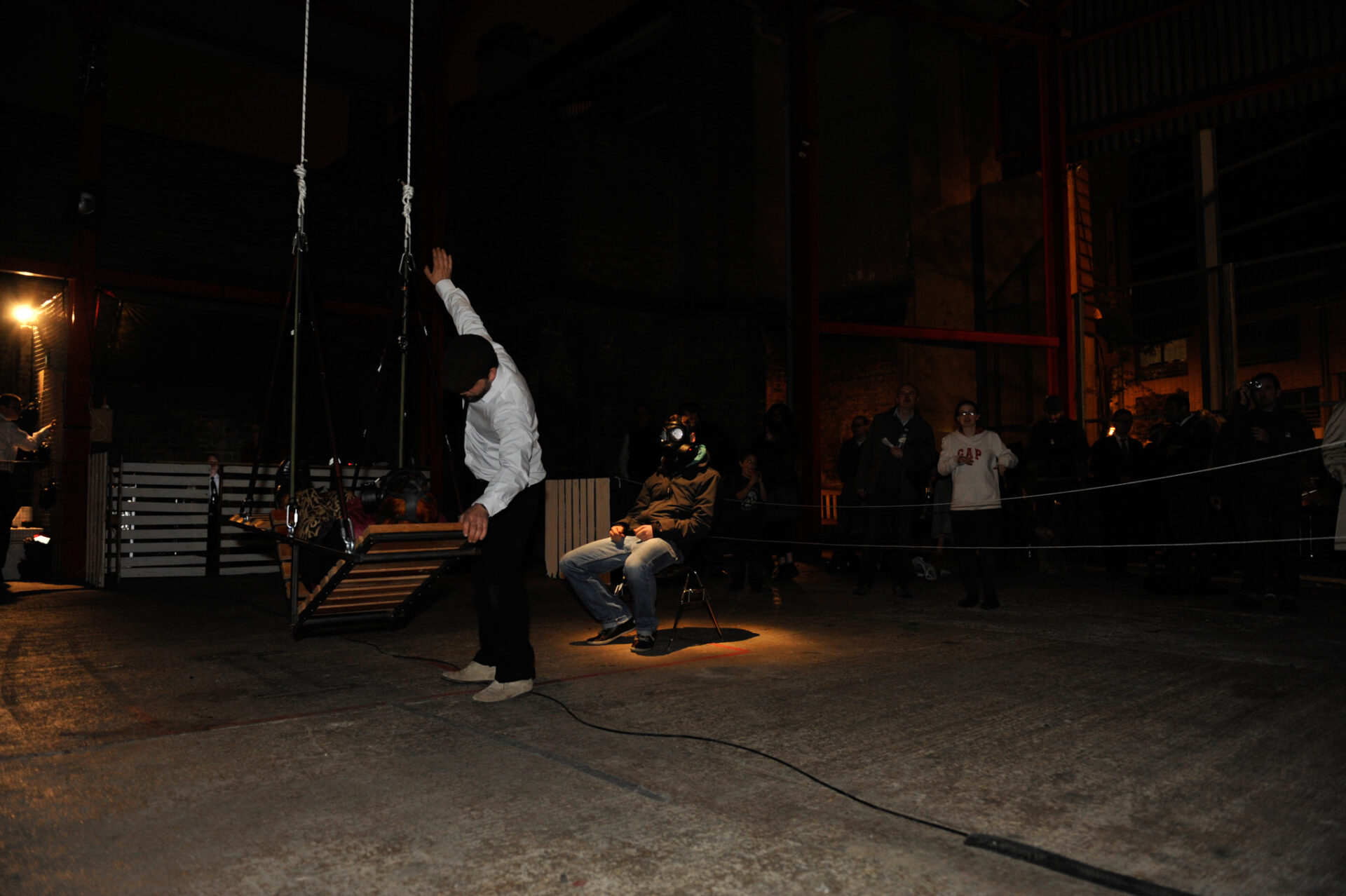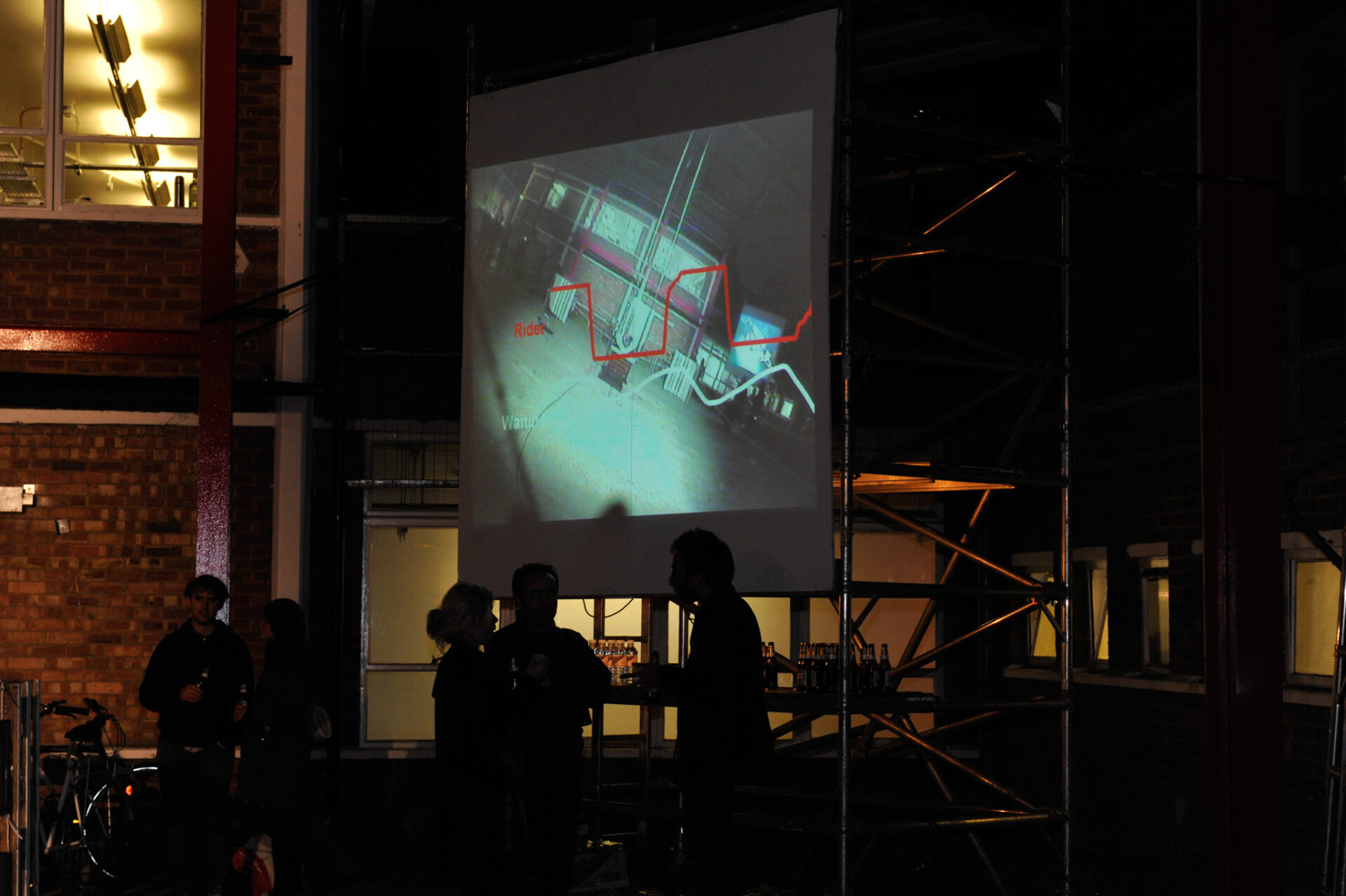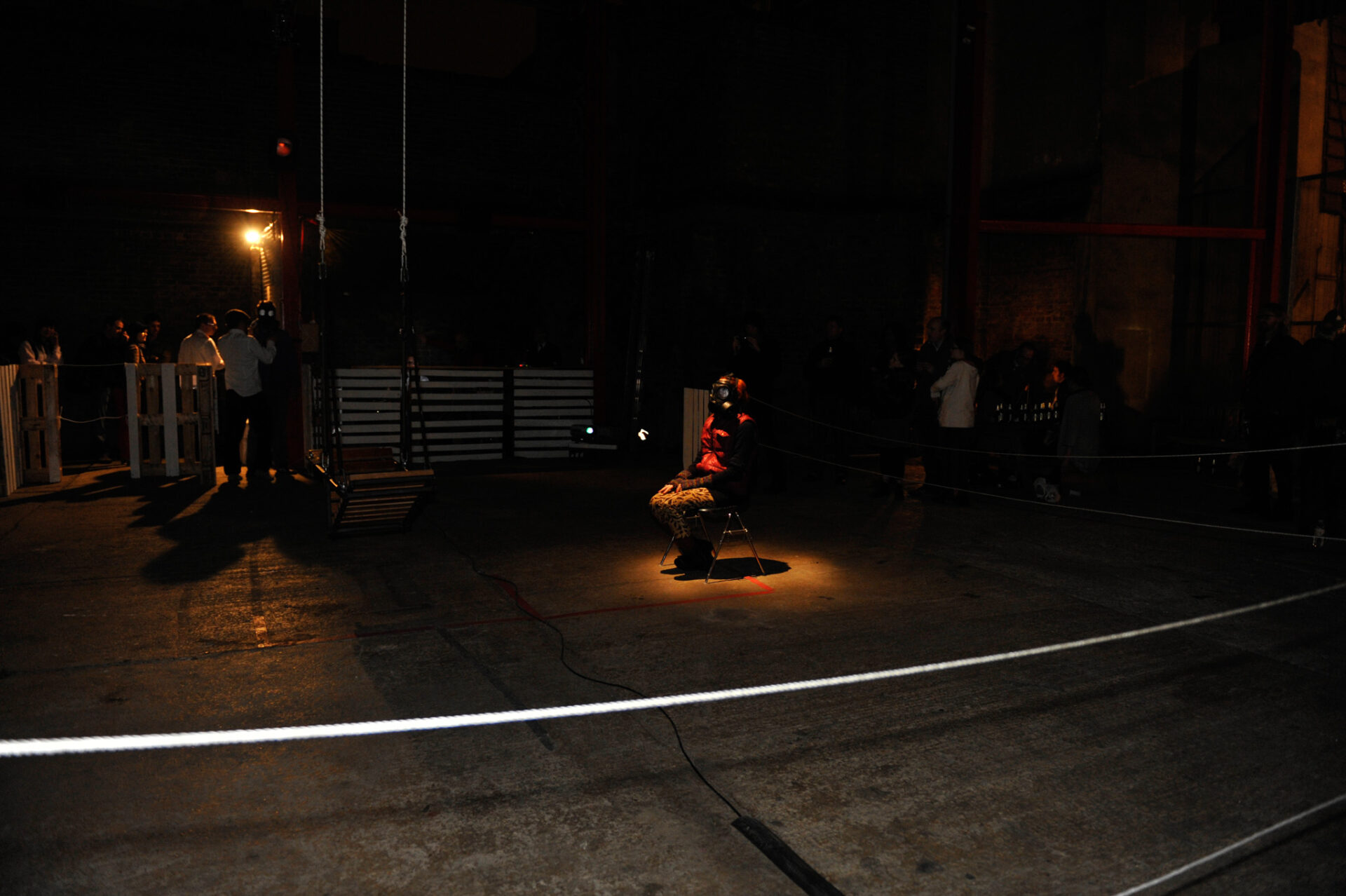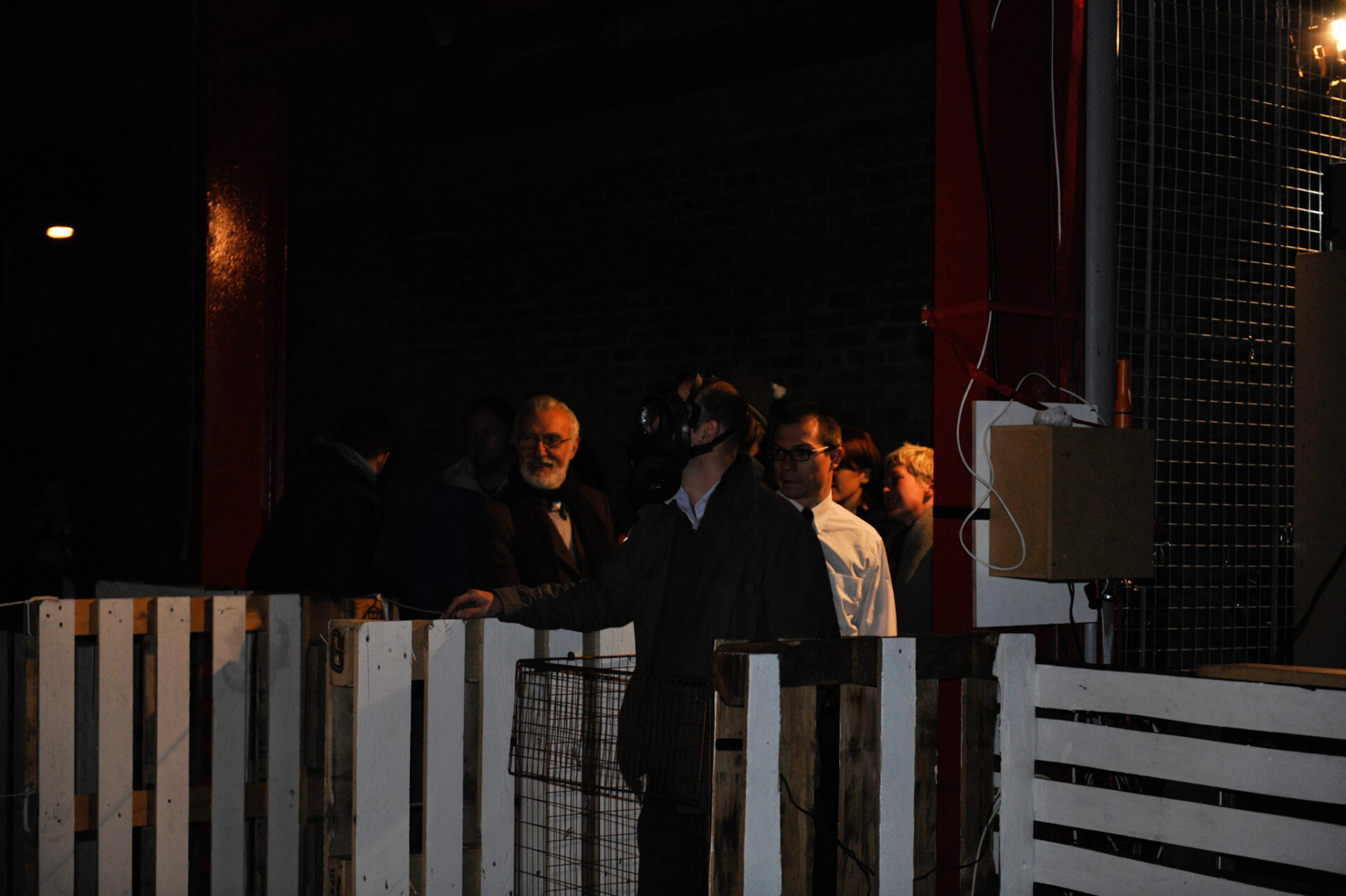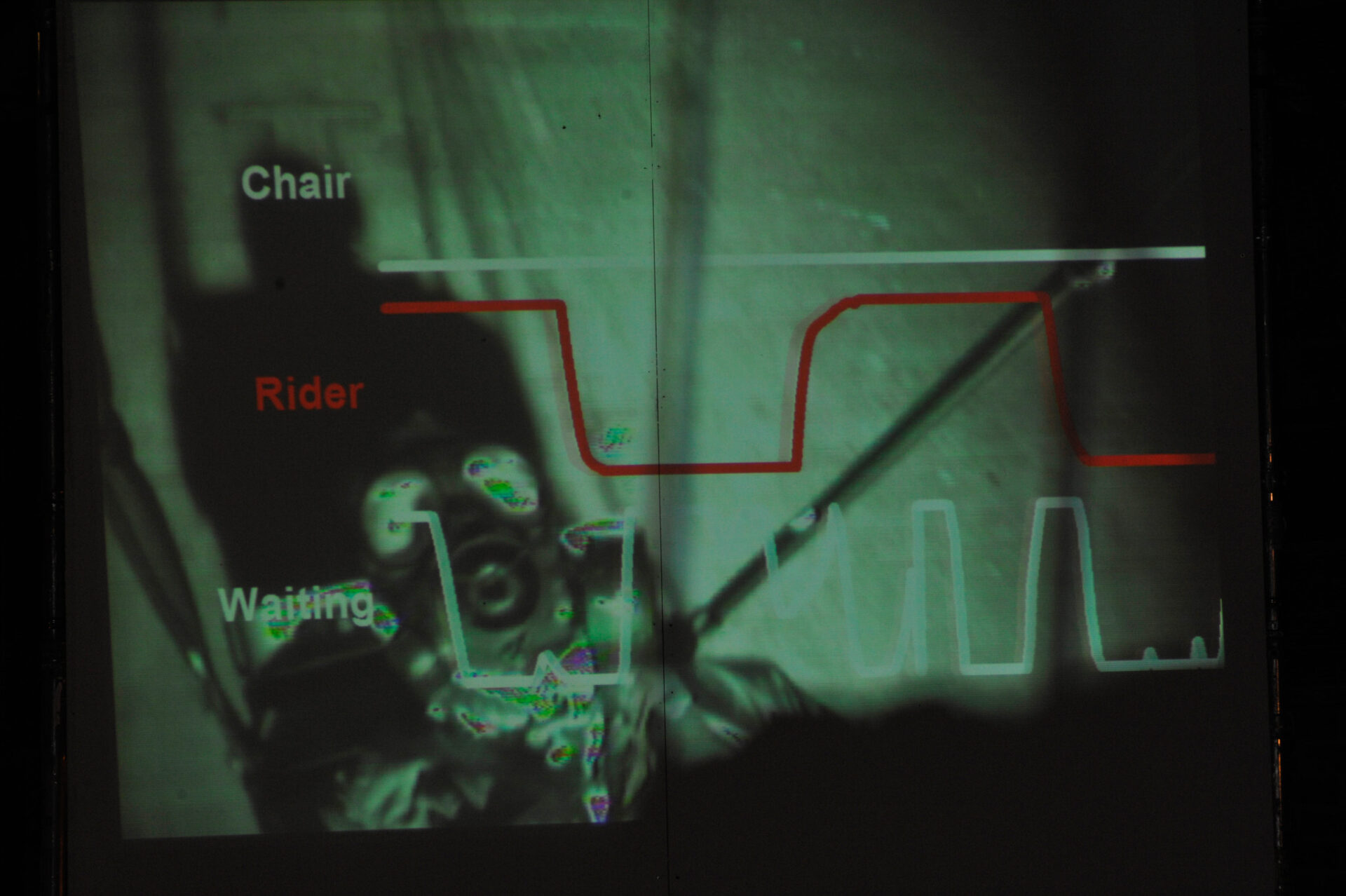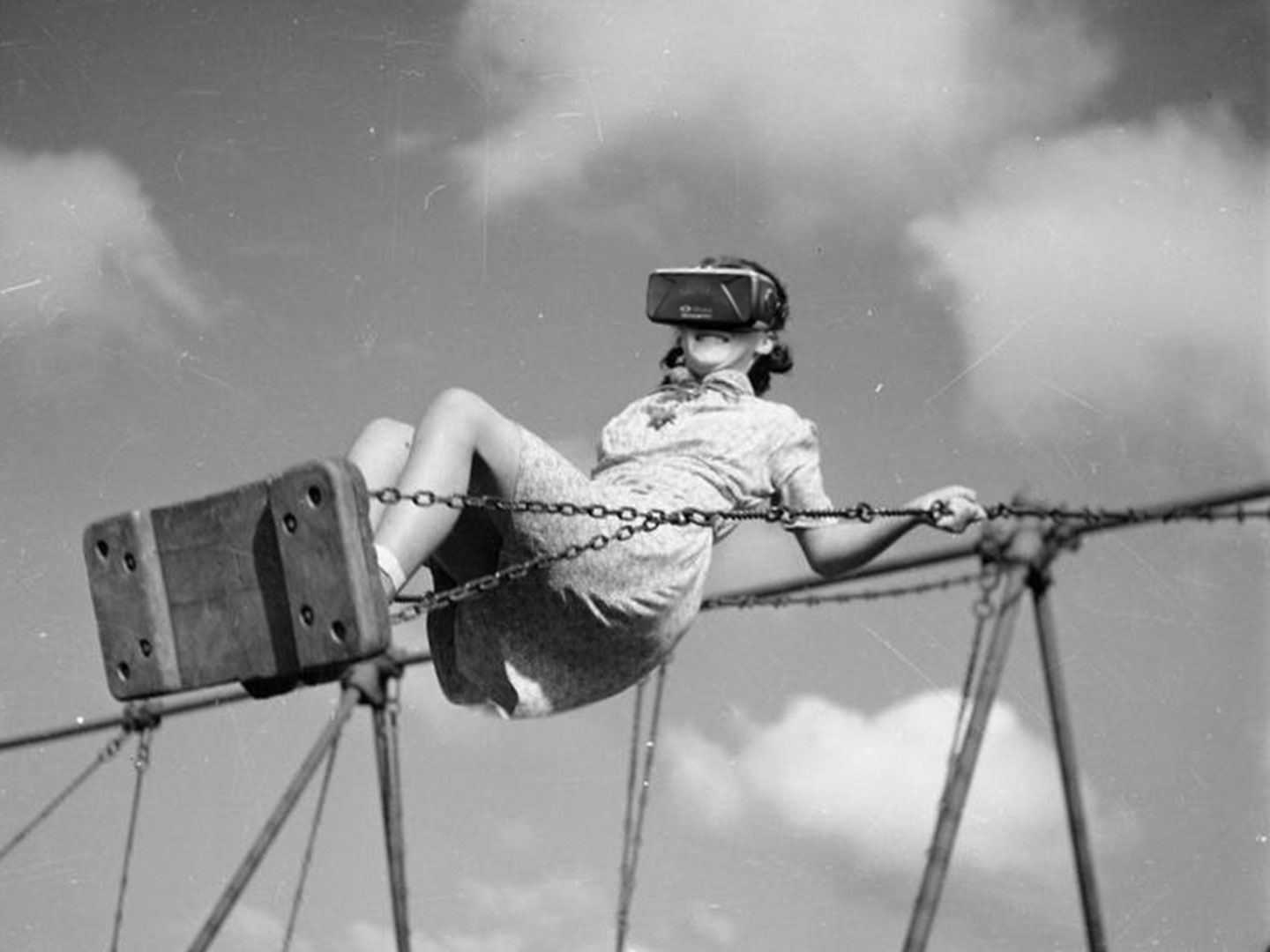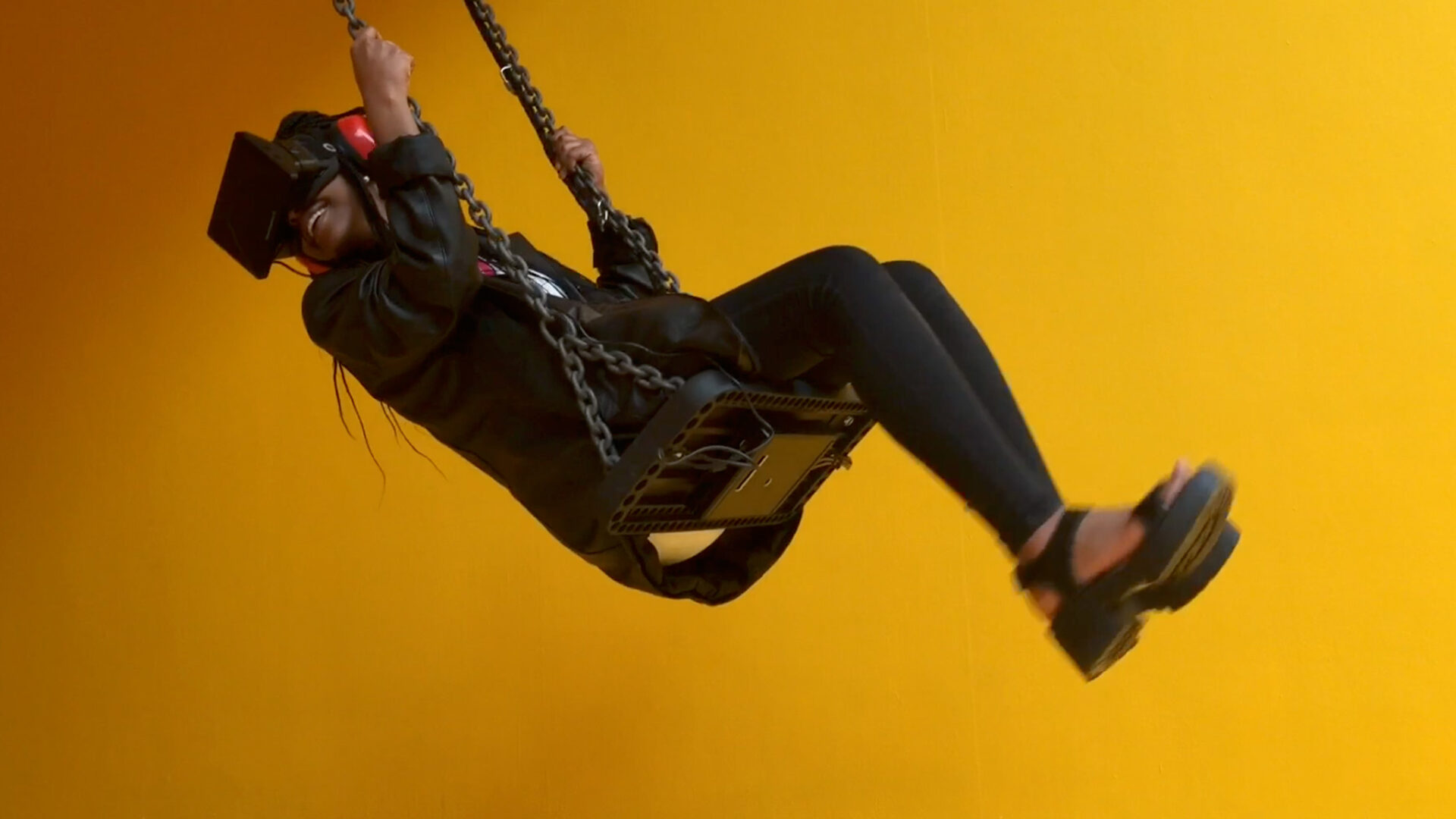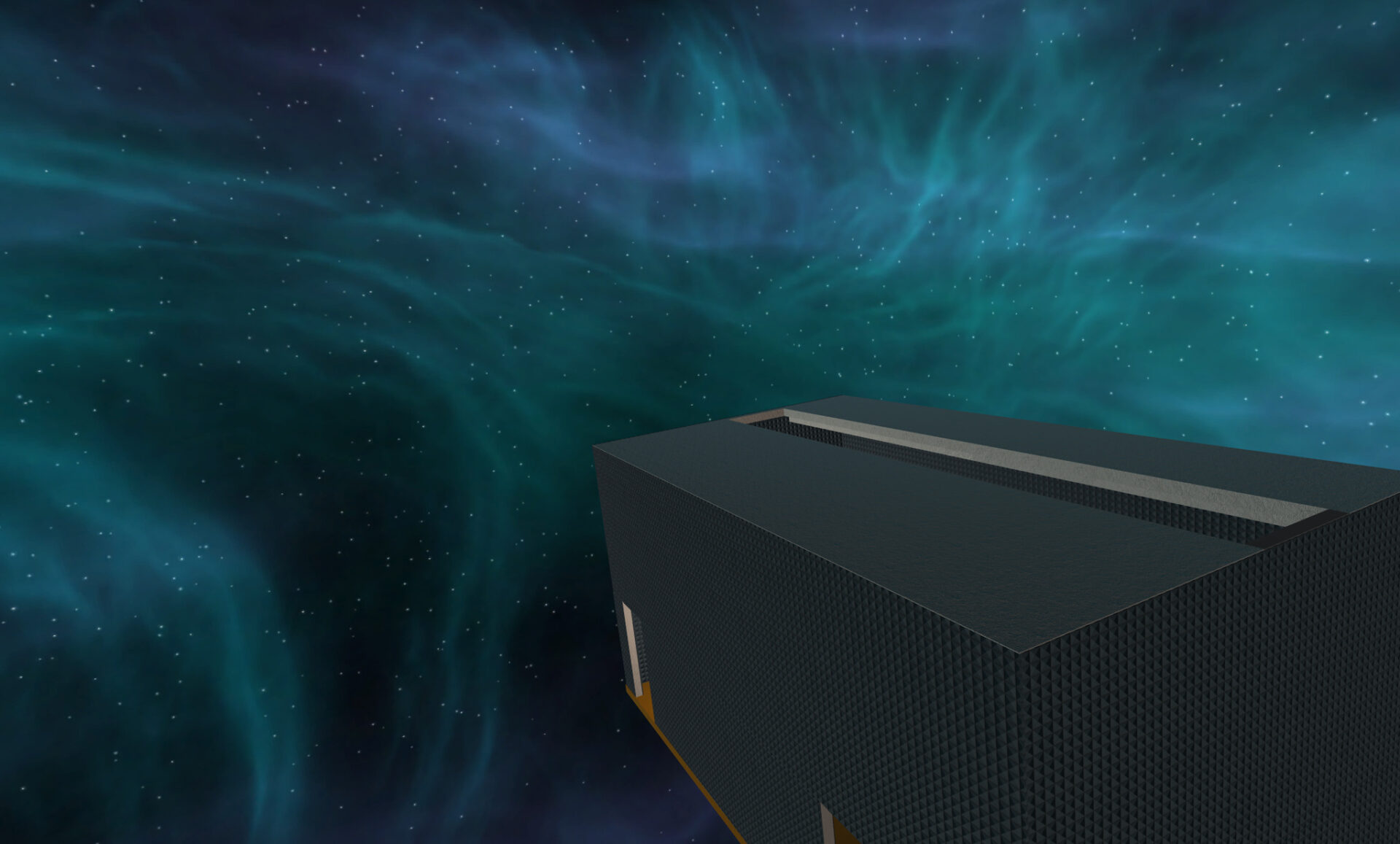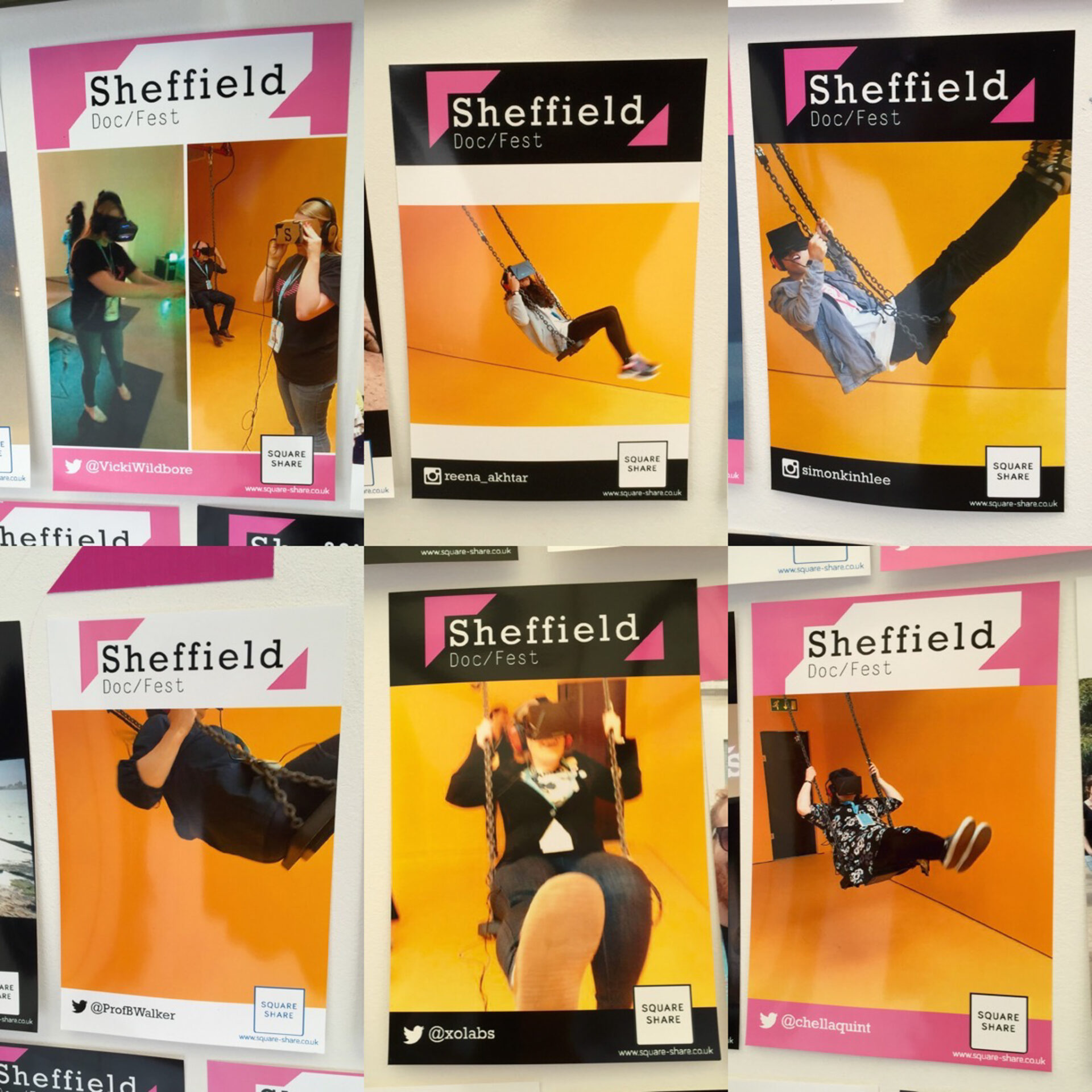Volo
Take flight in one of four award-winning virtual da Vinci flying machines, celebrating Leonardo's 500th anniversary.
Flap and soar over cliffs as an Ornithopter bird-person; join a psychedelic aviator’s ballet in your Aerial Screw; shoot into satellite orbit from a renaissance cannon; or bank and weave in a Glider across extraterrestrial landscapes.
Volo features a unique tensioned swing structure, which is designed to be cantilevered from trees.
Oscillations
Oscillations is based on two popular entertainment technologies: the multi millennia-old swing and the 21st century virtual reality headset - the former designed to excite the vestibular system, the latter designed to excite the visual cortex.
Headsets mask reality, and draw the rider into an insular world. The actions of swinging and looking are rewarded with uncanny, dynamic, vertiginous architectural landscapes that excite the senses. Riders’ haphazard shrieks of delight, and groans of discomfort suggest an illicit experience. Cubic sculptural forms reference the language of playground equipment. A queue of spectators grows.
VR Playground
Don a virtual reality headset, jump on a playground swing, and be transported on an exhilarating swing-powered adventure.
VR Playground is an experiential ride installation and aerial performance. Riders propel themselves through a series of colourful geometric virtual worlds, each driven by the action of swinging within a cubic structure. An array of fantastical virtual motions offers alternative realities to the real physical sensations of swinging, set within a unique architectural-scale virtual playground and soundscape, designed to excite a spirit of fun and visceral experimentation.
Riders inadvertently perform moments of wonder, awe and trepidation to spectators, many of whom are queuing for the ride themselves, curious to discover the secrets of these hidden worlds.
High Roller (rating “turbocharged”): scoot through the metropolis inside a mono-wheel. Shuttlecock (rating “bonkers”): leap tall structures in a single bound. Jellyfish (rating “eerie”): undulate upwards to escape the deep abyss. Walker (rating “feel-good”): from baby steps to giant strides, go strut your stuff.
Breathless
Text taken from publication ‘Uncomfortable Interactions’.
A ride inspired by Jean-Honore Fragonard’s painting The Swing, which reportedly depicts an erotic scene involving three people: a woman riding the swing, a voyeur in the bushes watching the woman’s exposed legs, and her fiancé controlling the swing via a pull rope.
Breathless, focuses on entertainment and sociality in the mainstream setting of an amusement park. At its heart is a novel interaction technology that is deliberately designed to create a new element of fear and discomfort into rides – a gas mask that is enhanced with respiration sensors and Wi-Fi so that visitors can interact with rides by breathing, requiring riders to simultaneously battle the ride and their own bodily response. Breathless extends this approach by embedding breath sensors into a gas mask which is used to drive a large powered swing. A selected respiration monitor transmitted breathing data to a ride control computer which in turn, actuated a rope swing, pulling it backwards when the rider inhaled and forwards on exhalation.
Due to the natural pendulum nature of the swing, this required a human to breathe in harmony with the swing’s resonant frequency to make the swing go higher. The swing length was chosen to resonate at a comfortable breathing rate of 12 breaths per minute. This core idea was embedded into an overall ride experience whose design was inspired by Jean-Honore Fragonard’s painting The Swing (1767) which reportedly depicts an erotic scene involving three people: a woman riding the swing, a voyeur in the bushes watching the woman’s exposed legs, and a bishop controlling the swing via a pull rope. This was mapped onto a ride structure in which each participant moved between three distinct roles: voyeur, rider, and controller.
On arrival, each participant joined a queue, to be fitted with a gas mask when they reached the front. They were then taken to a specific viewpoint where they became the voyeur, watching a floodlit rider swinging in front of them. Once the ride stopped, this rider dismounted and was taken to a seat next to the swing to become the controller. In turn, our voyeur was now led to the swing to become the new rider. At this point the floodlight was extinguished and the controller was now spot-lit from above while they initially controlled the swing, with the rider at their whim. After a while, control of the swing passed over to the rider, which would often involve a noticeably jerky moment of transition if their breathing was out of sync with its movements. After roughly two minutes, the ride stopped, the rider was moved to assume the role of the controller and our new voyeur became the next rider.
Oscillate
Oscillate is an immersive interactive artwork based on two popular entertainment technologies: the multi millennia-old rope swing and the 21st century Oculus Rift – the former designed to excite the vestibular system, the latter designed to excite the visual cortex. Oscillate was co-commissioned by Sheffield Doc/Fest and Crossover Lab and shown as part of VR Arcade at Site Gallery, Sheffield.
Oscillate is designed to exploit a sense of anxiety that can be created and amplified by mentally flipping between parallel activities of private experience and public performance. Each activity is experienced as the rider’s consciousness, and immersion, switches between virtual and real worlds. This fluctuation has both terrifying and thrilling effect.
A rider sits alone in a silent virtual digital facsimile of the gallery’s bustling real physical space. Once the rider starts swinging their trajectories in real and virtual worlds are initially matched. However, the rider’s virtual swing amplitude slowly begins to amplify, and the floor starts to drop away, sinusoidally in harmony with the swing (a reference to Irmin Roberts’ pioneering dolly zoom effect used by Hitchcock in Vertigo). Both illusions are designed to make the rider believe that they are swinging higher than they actually are.




